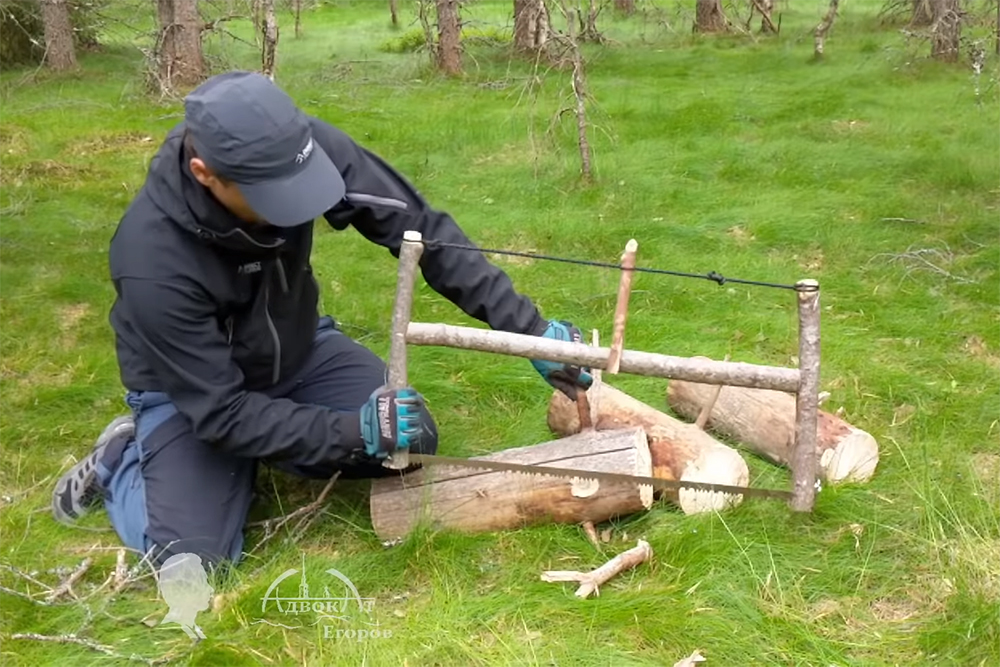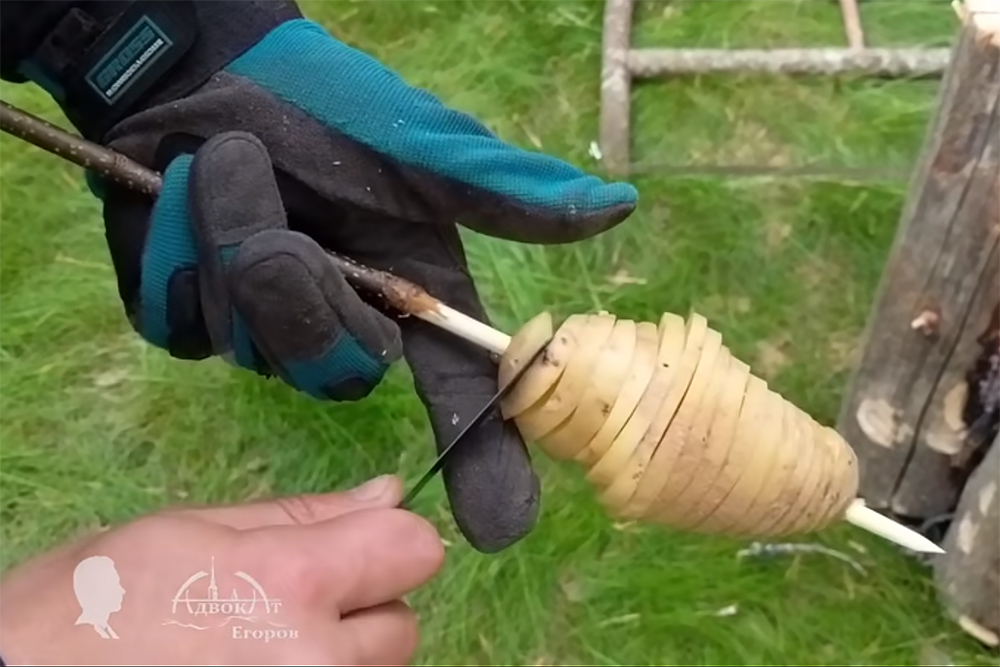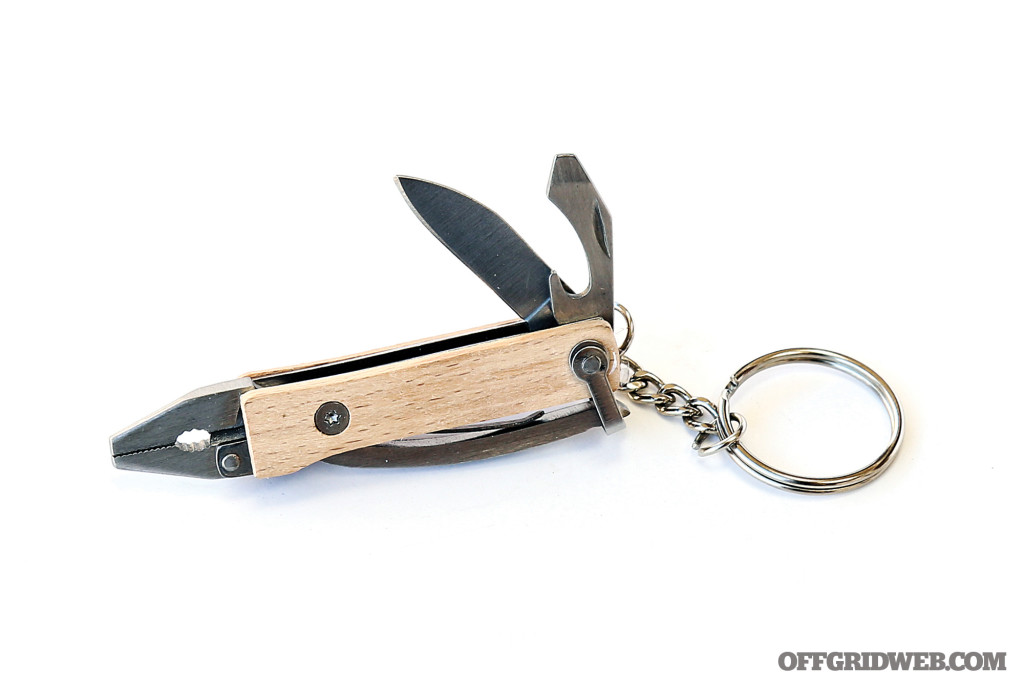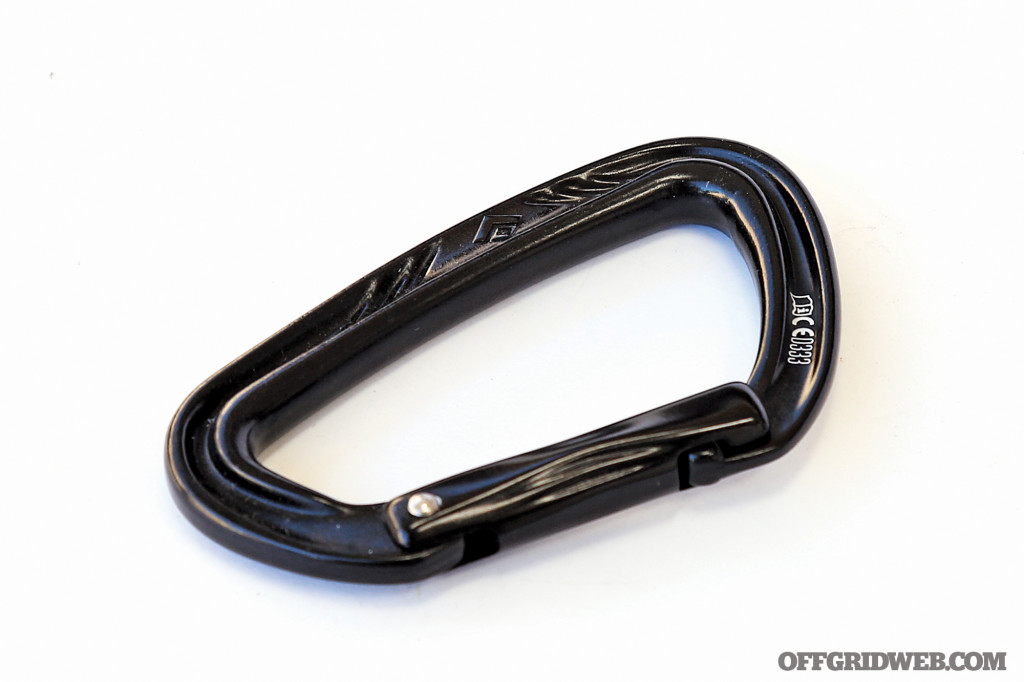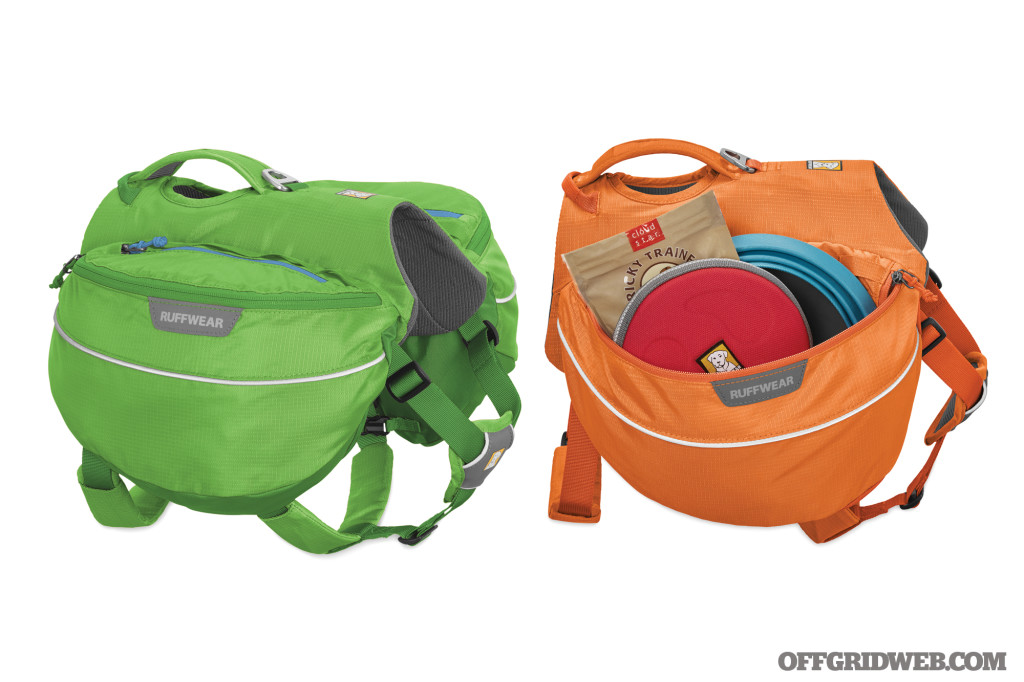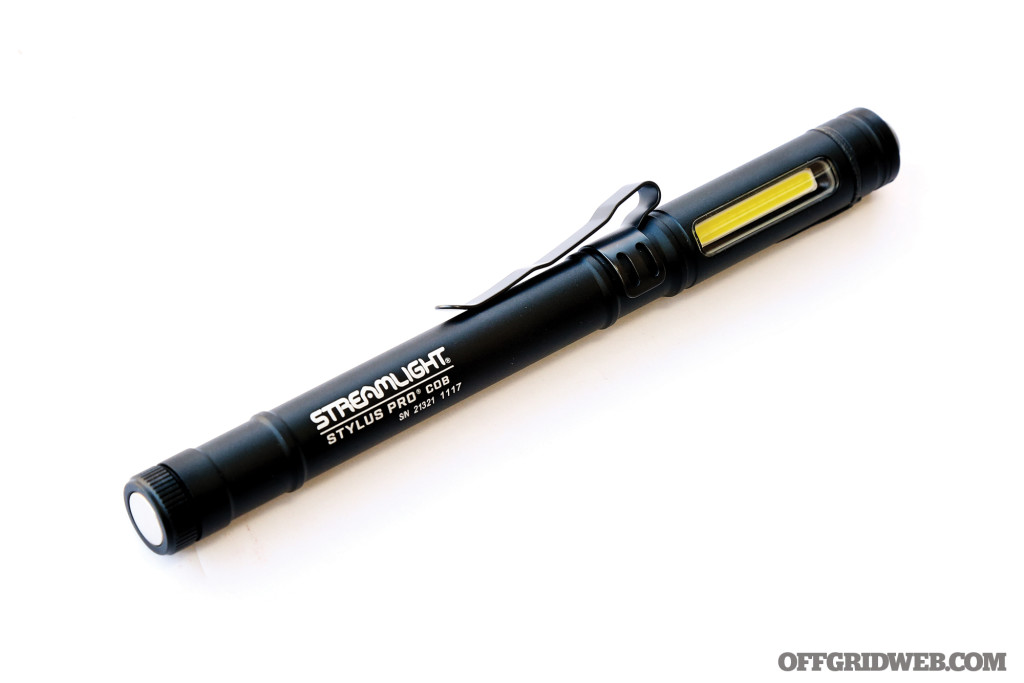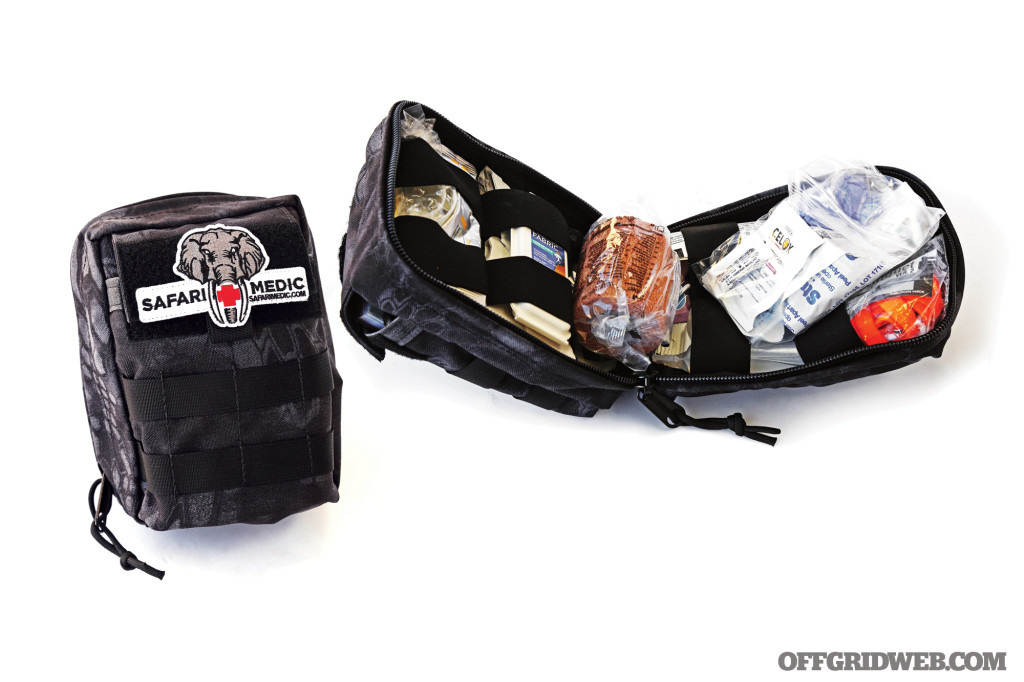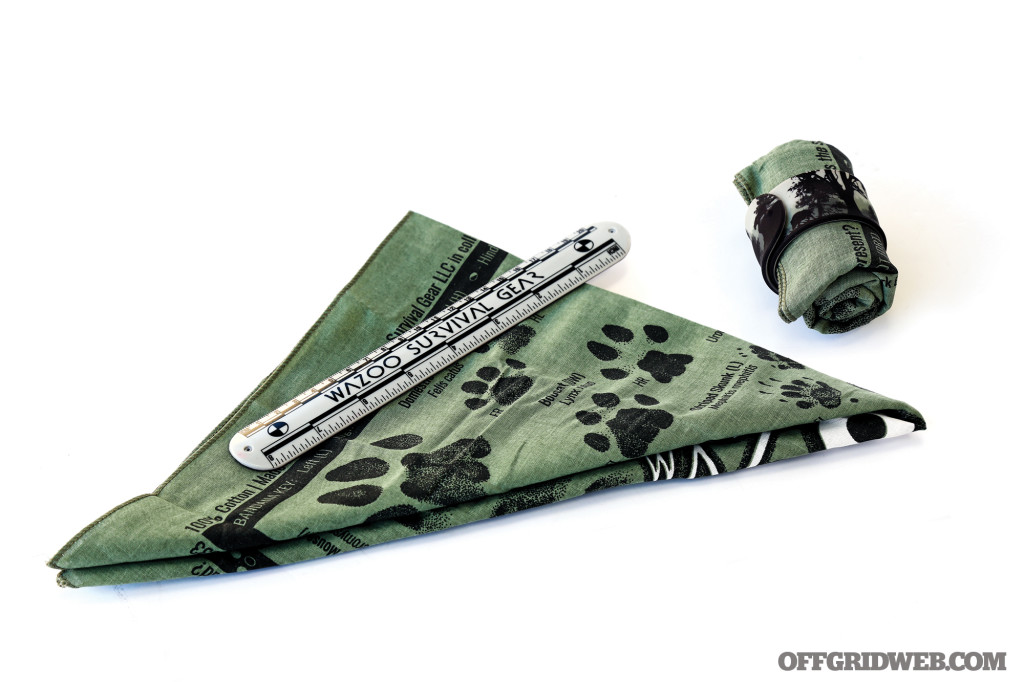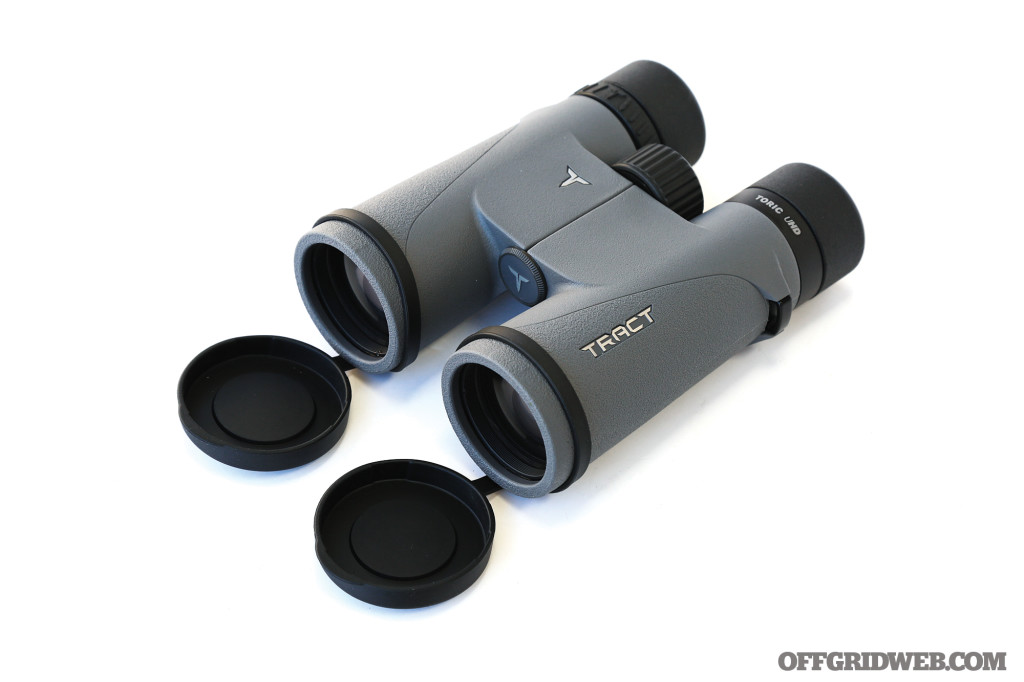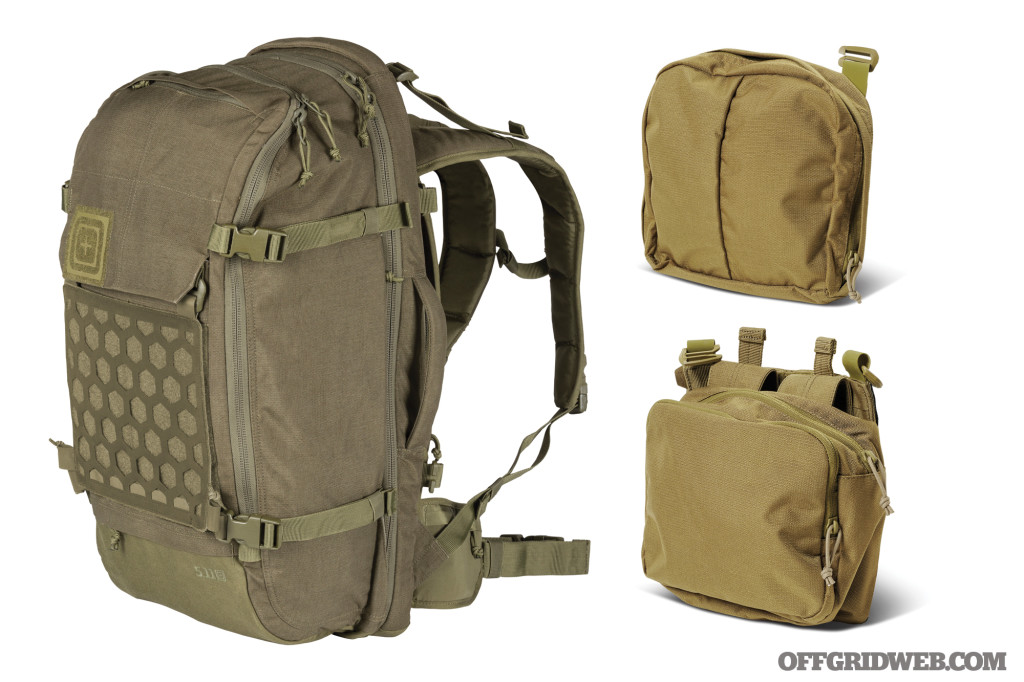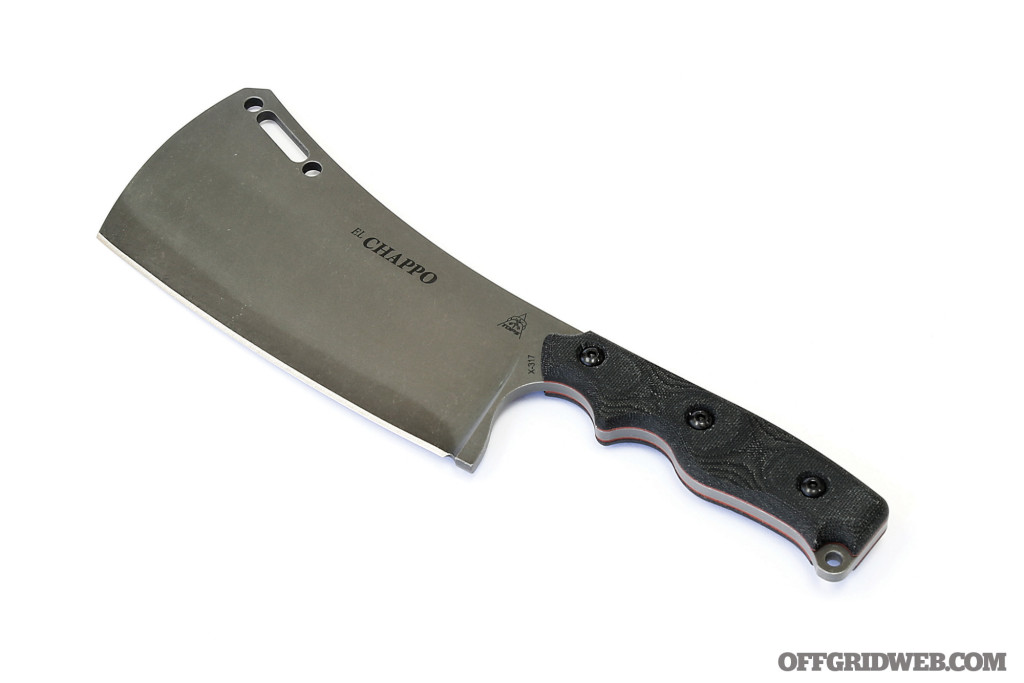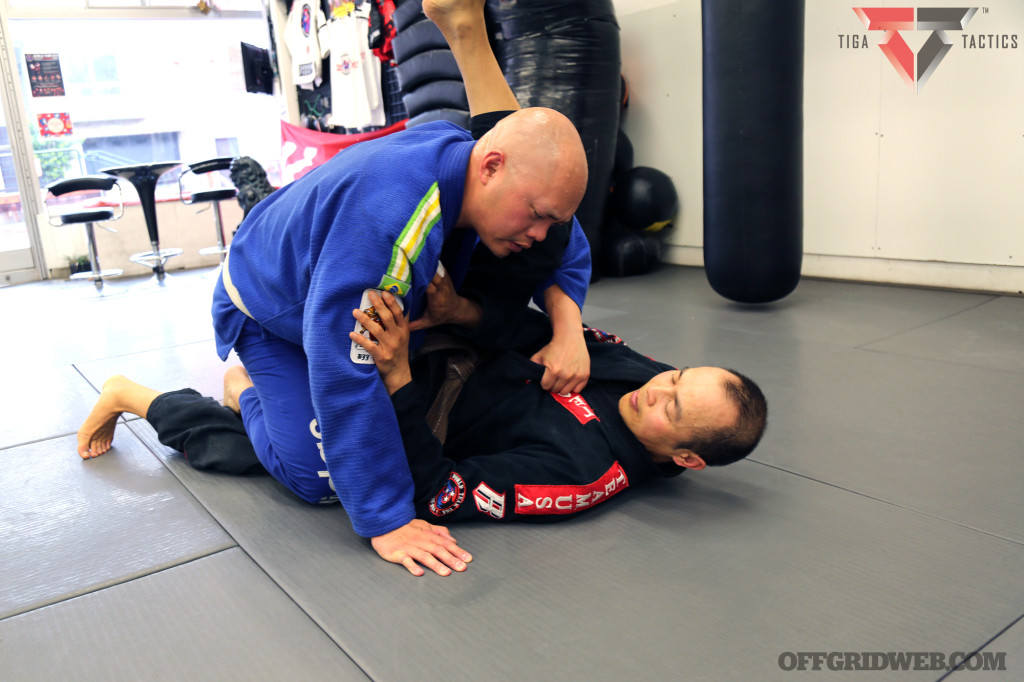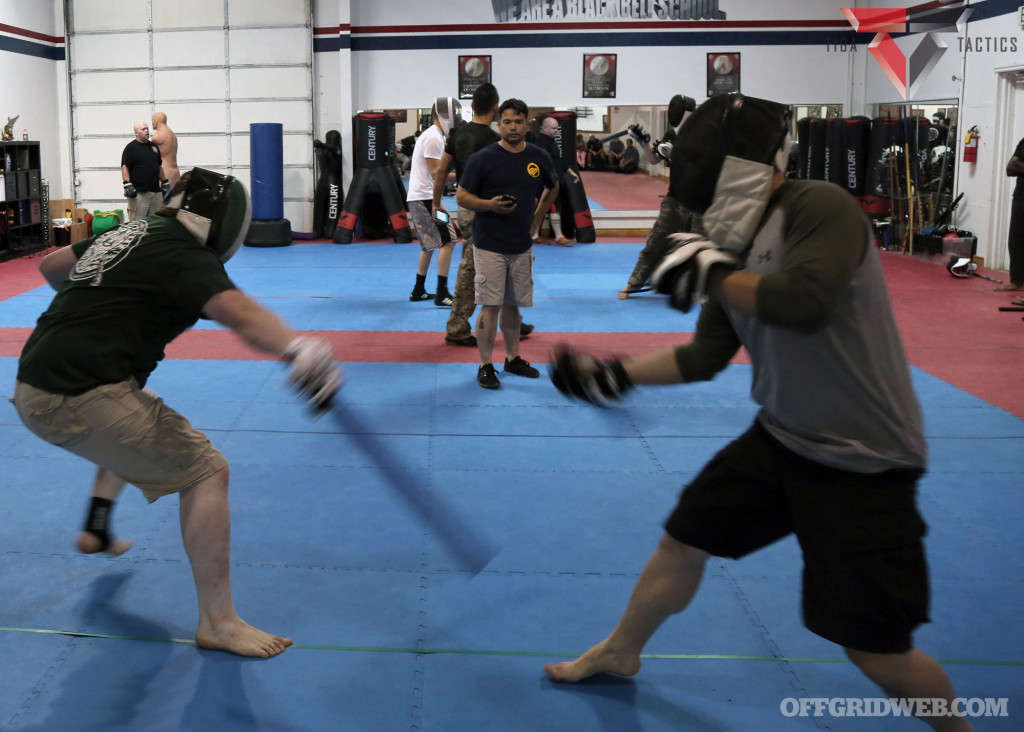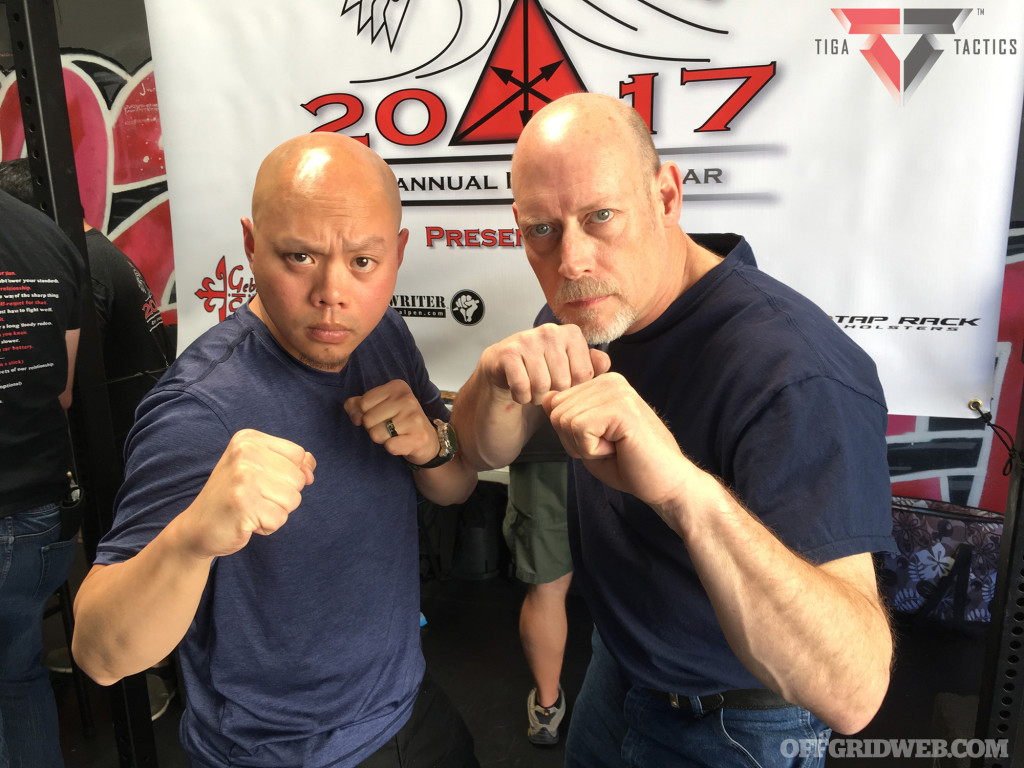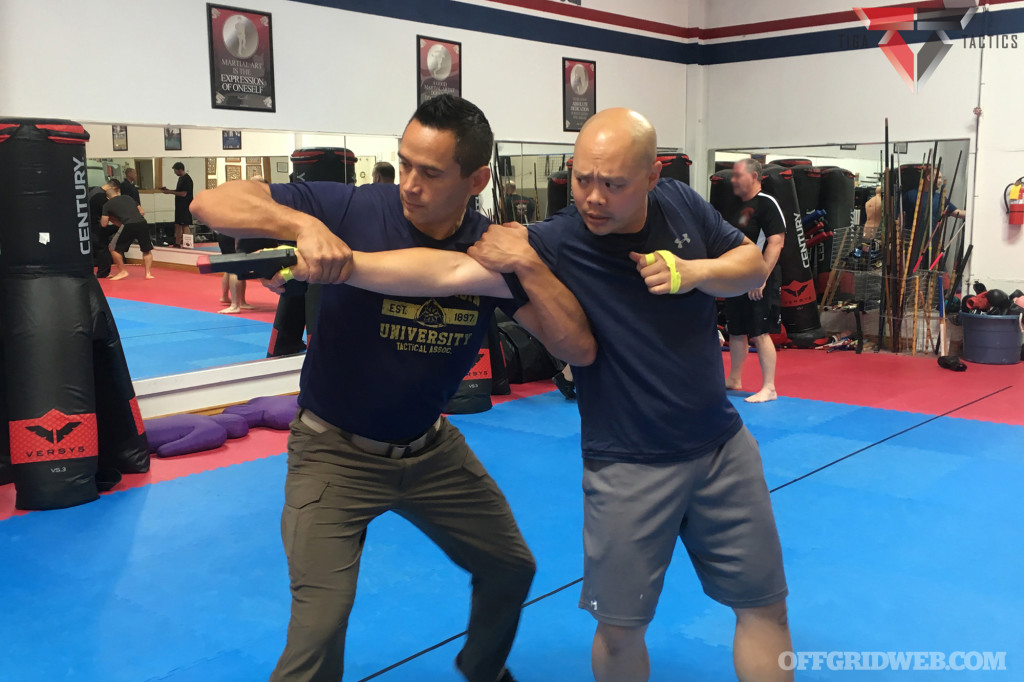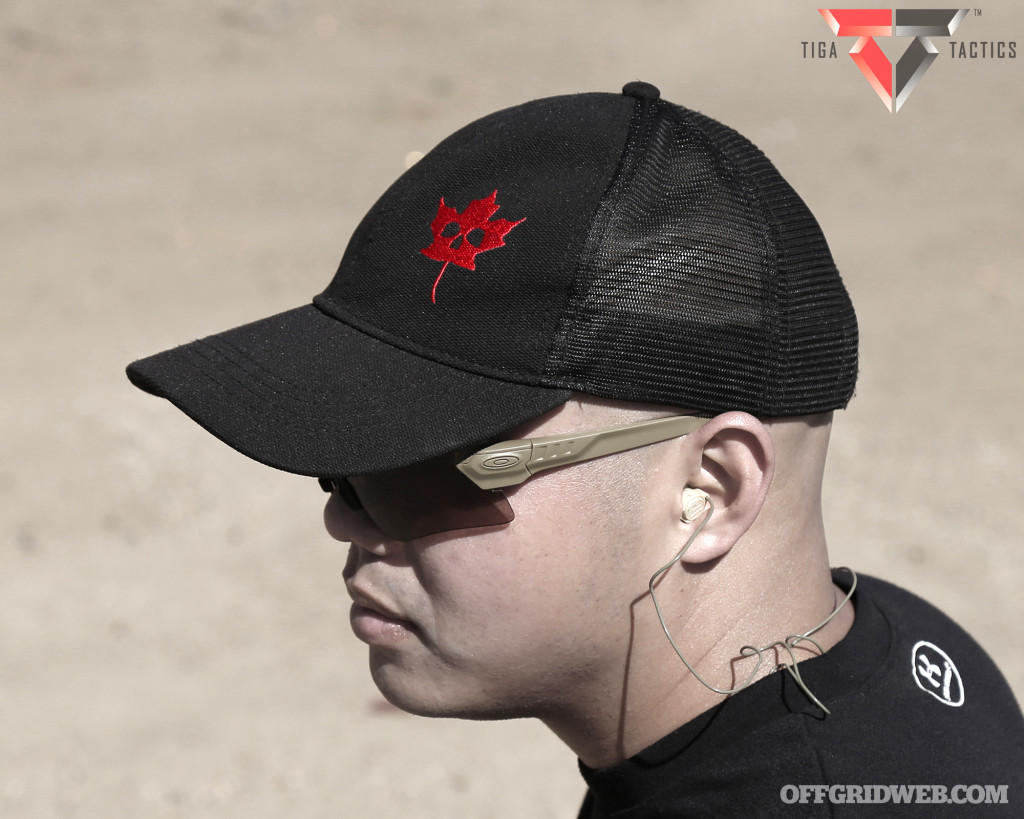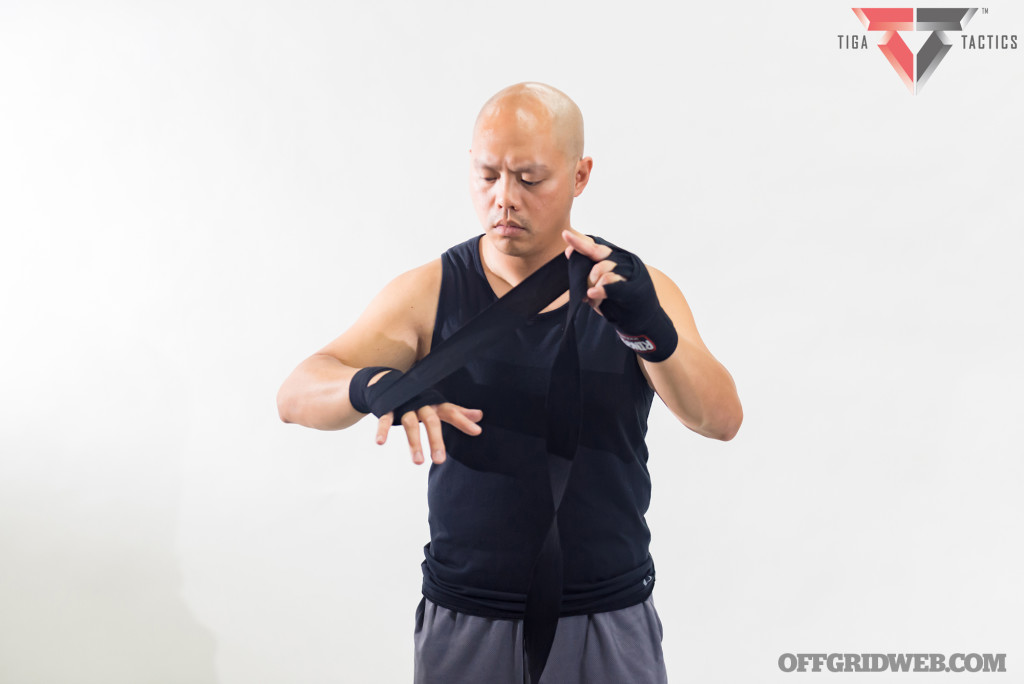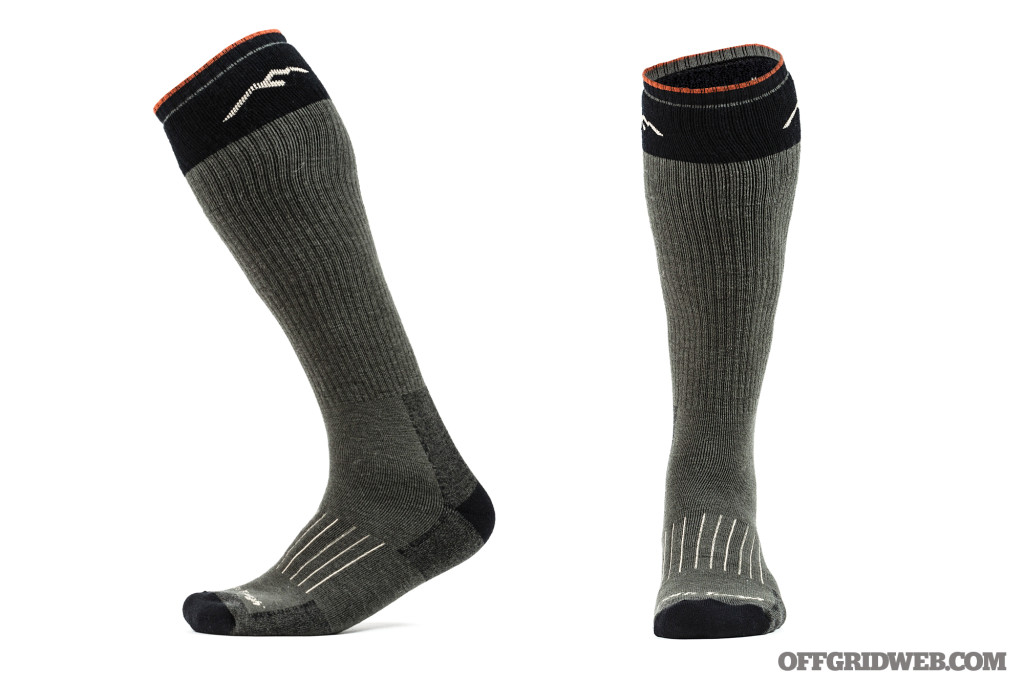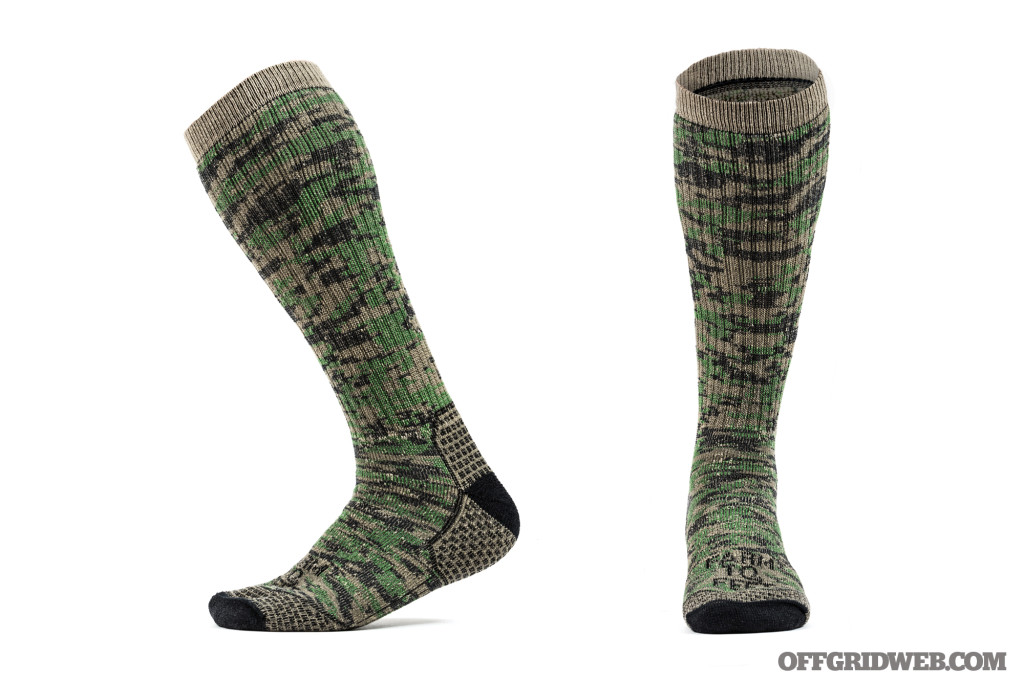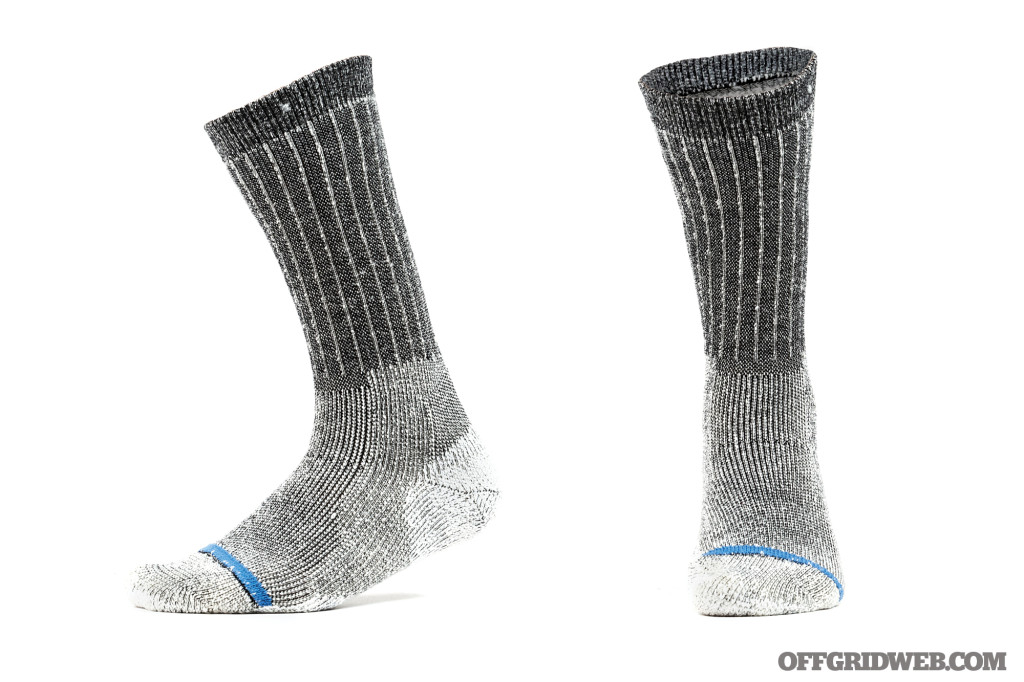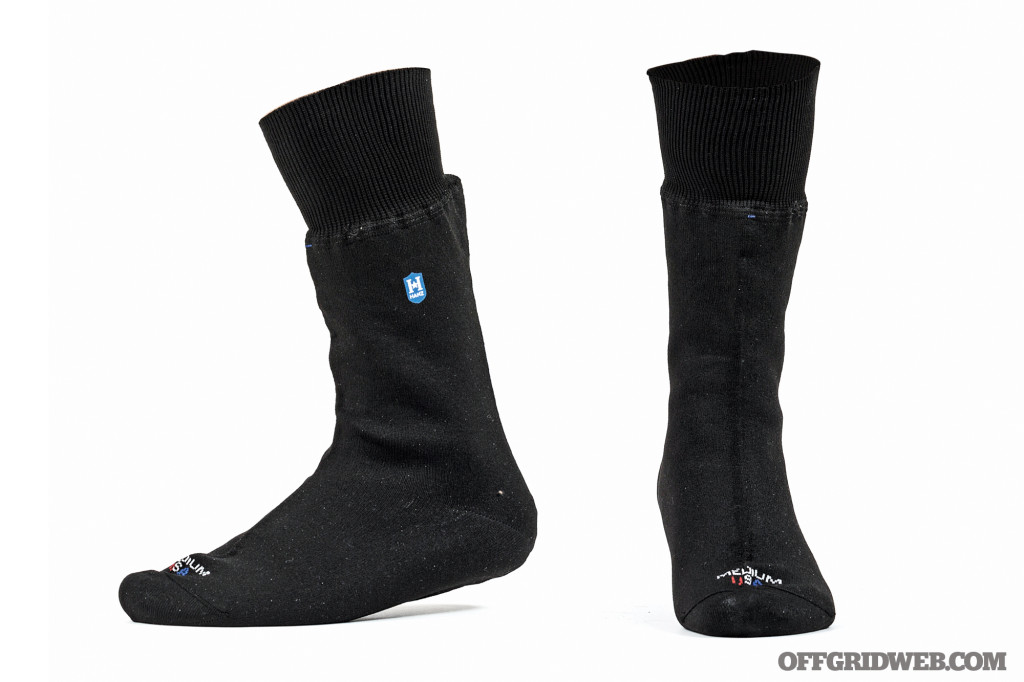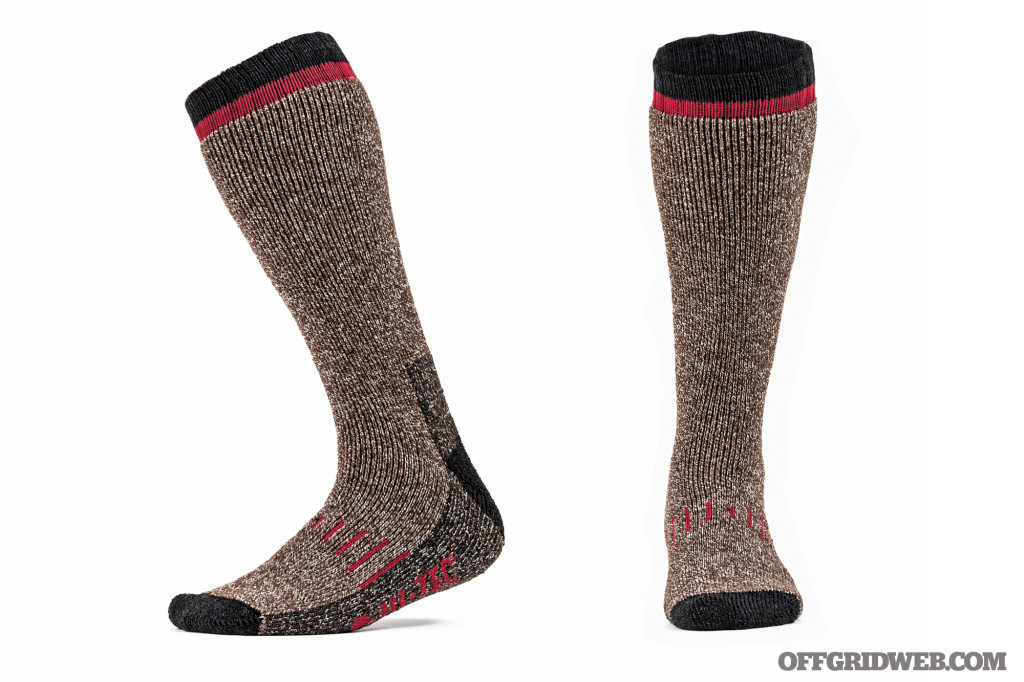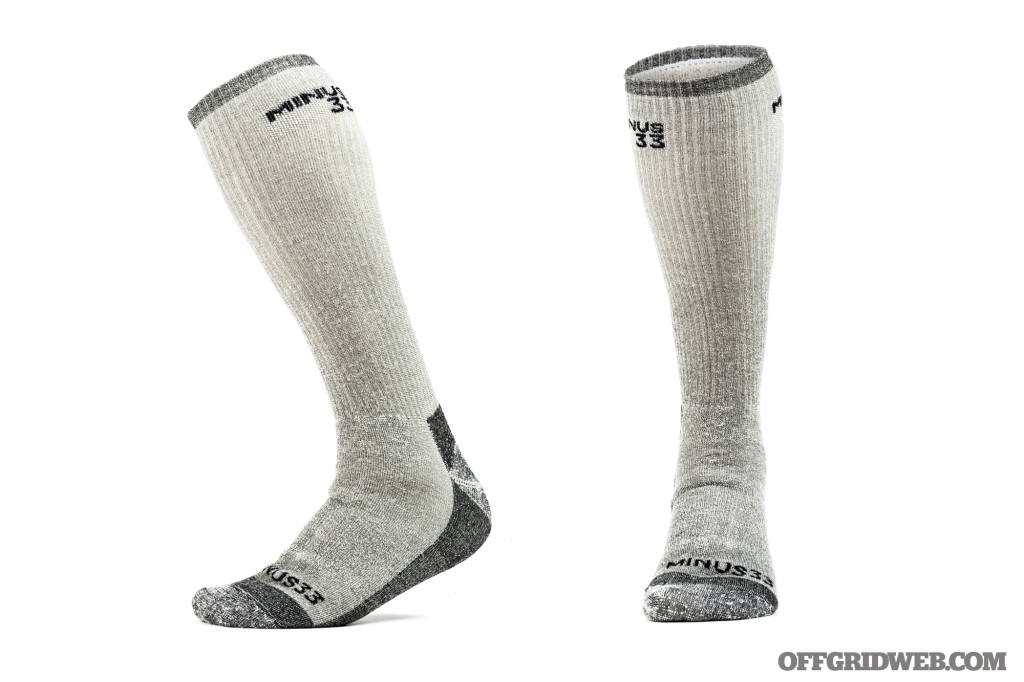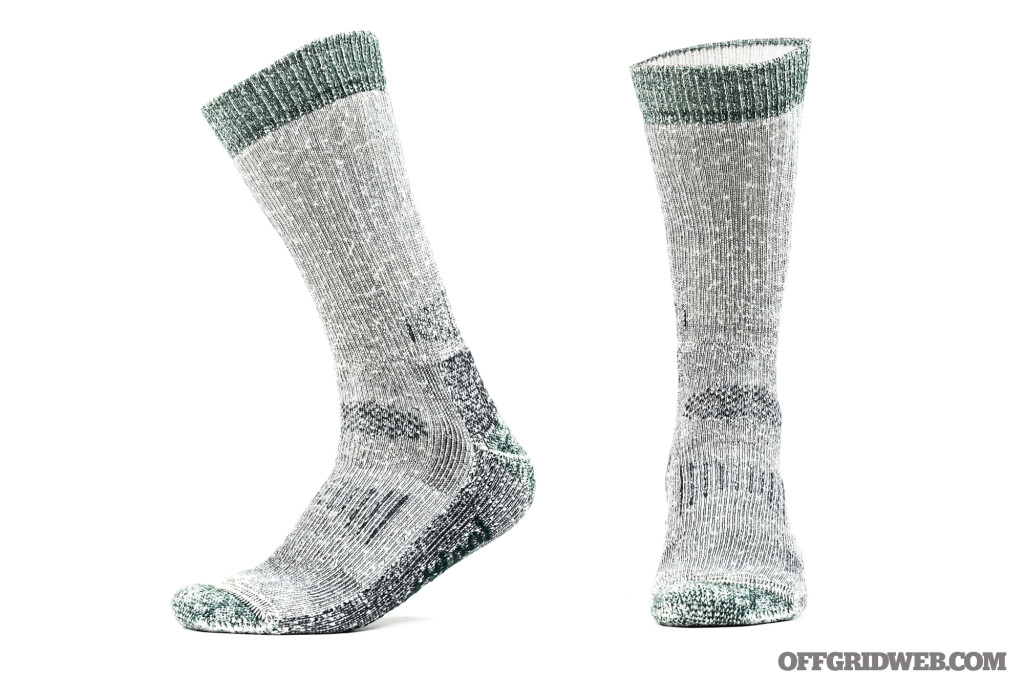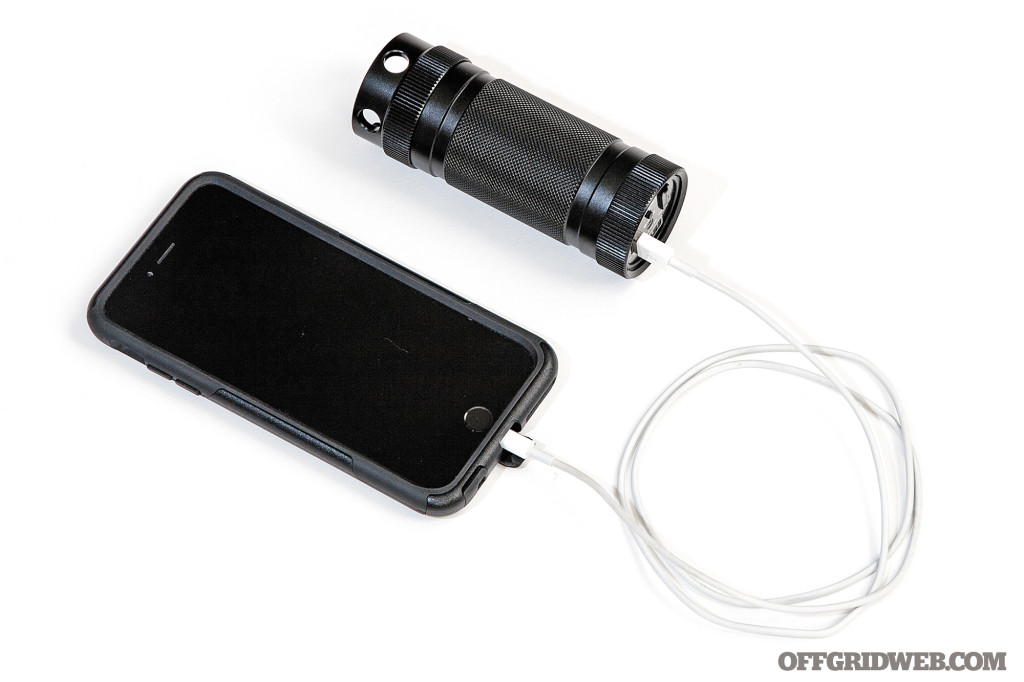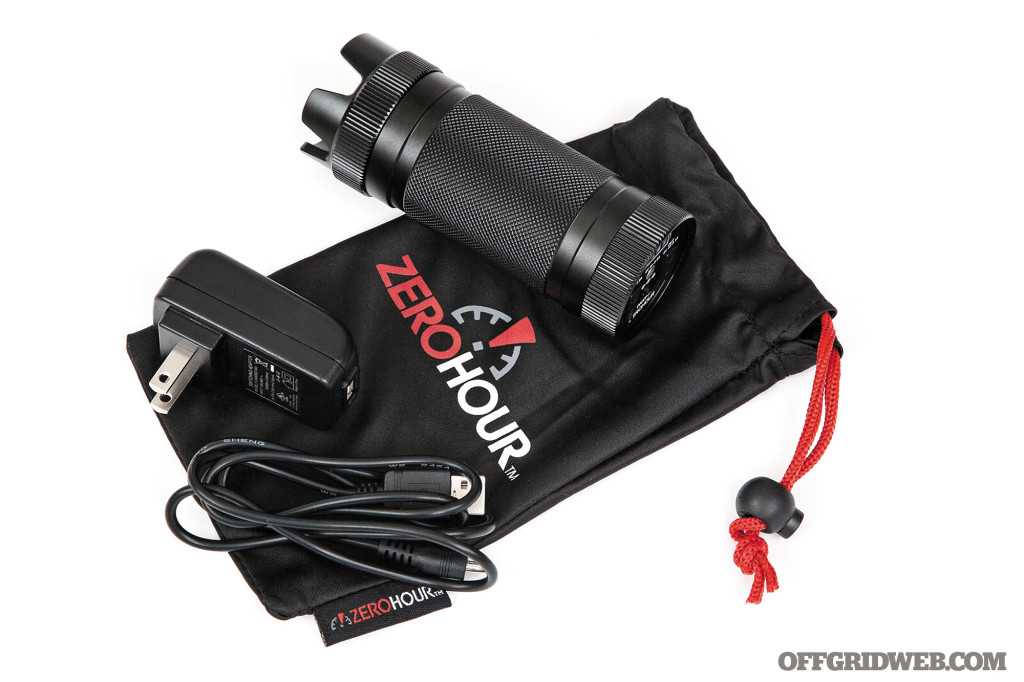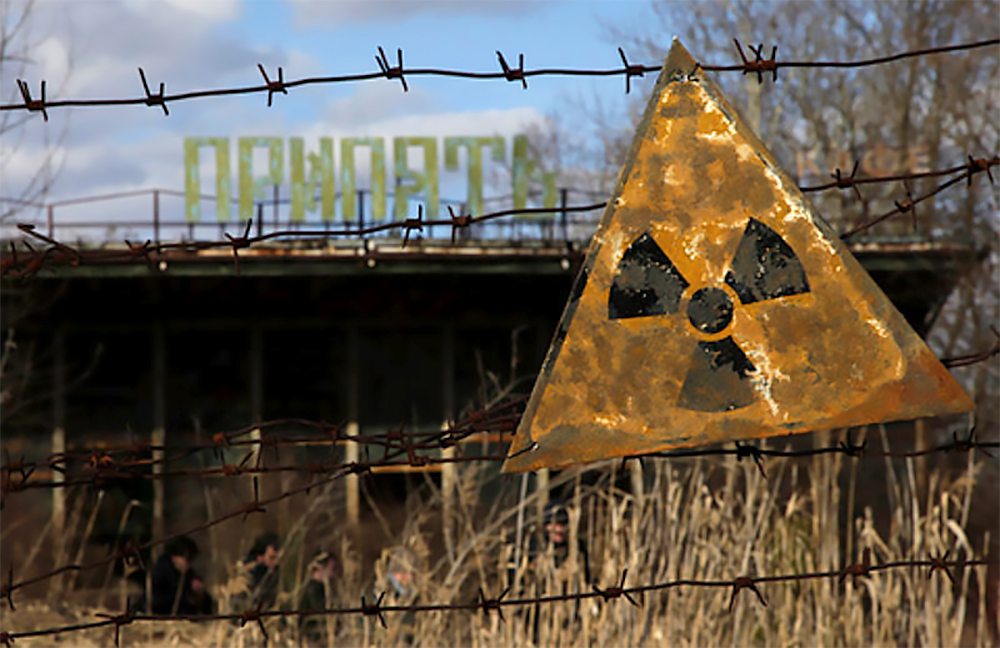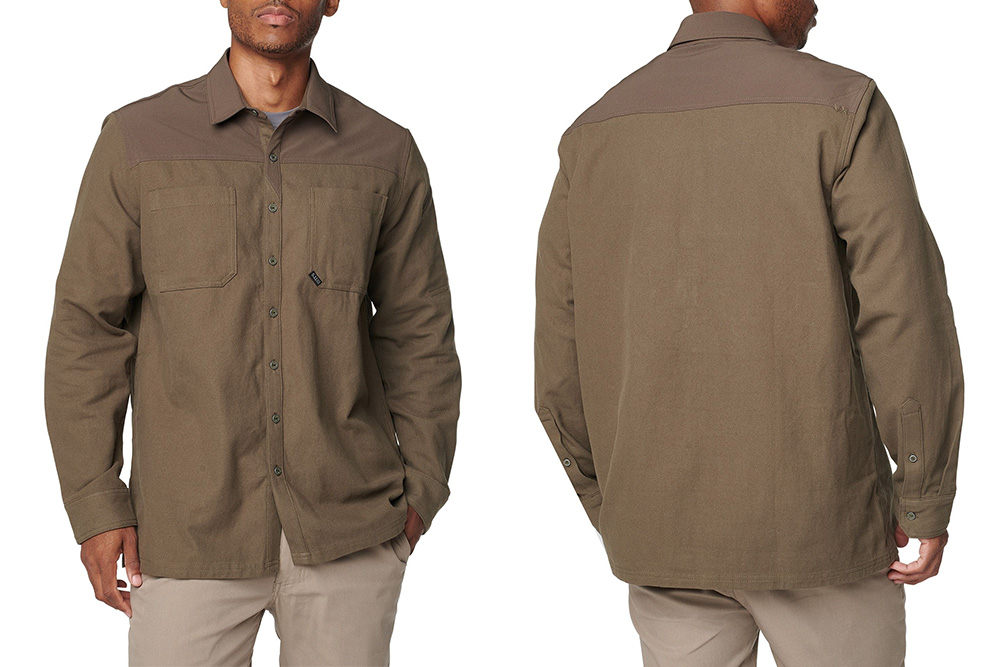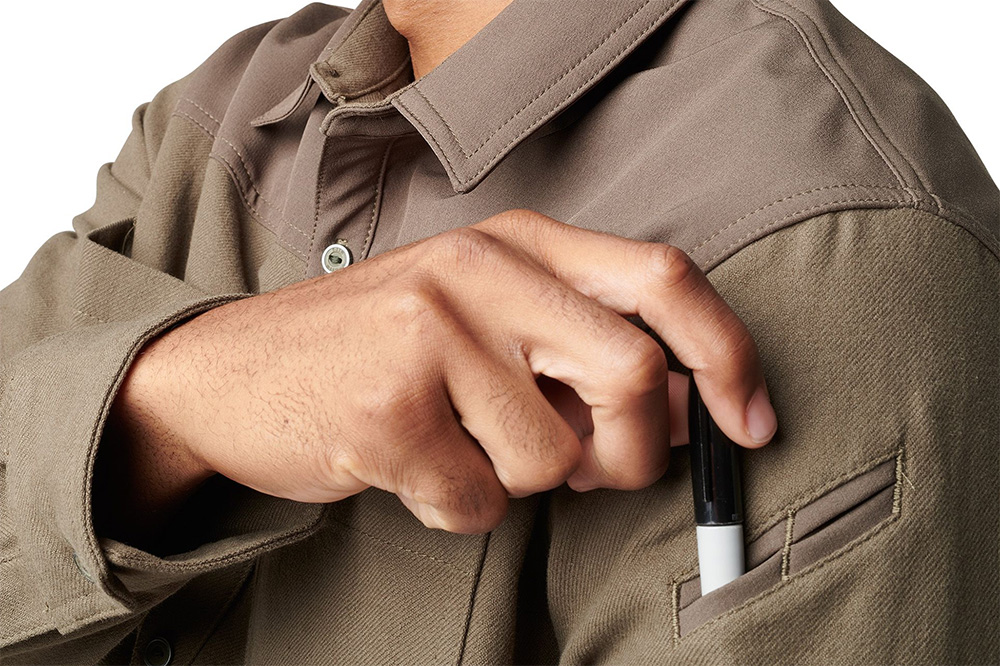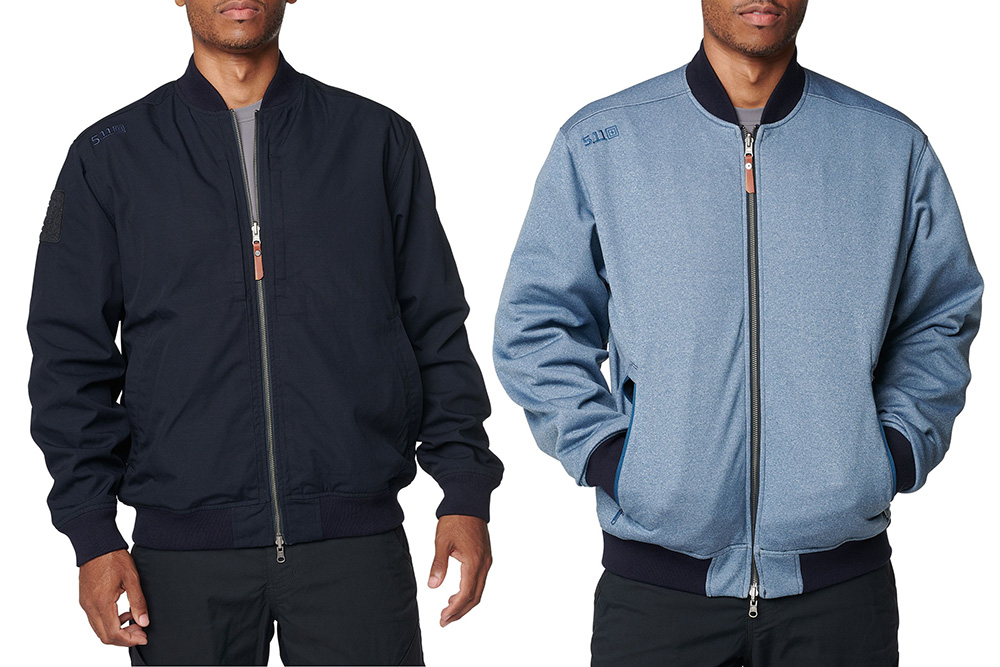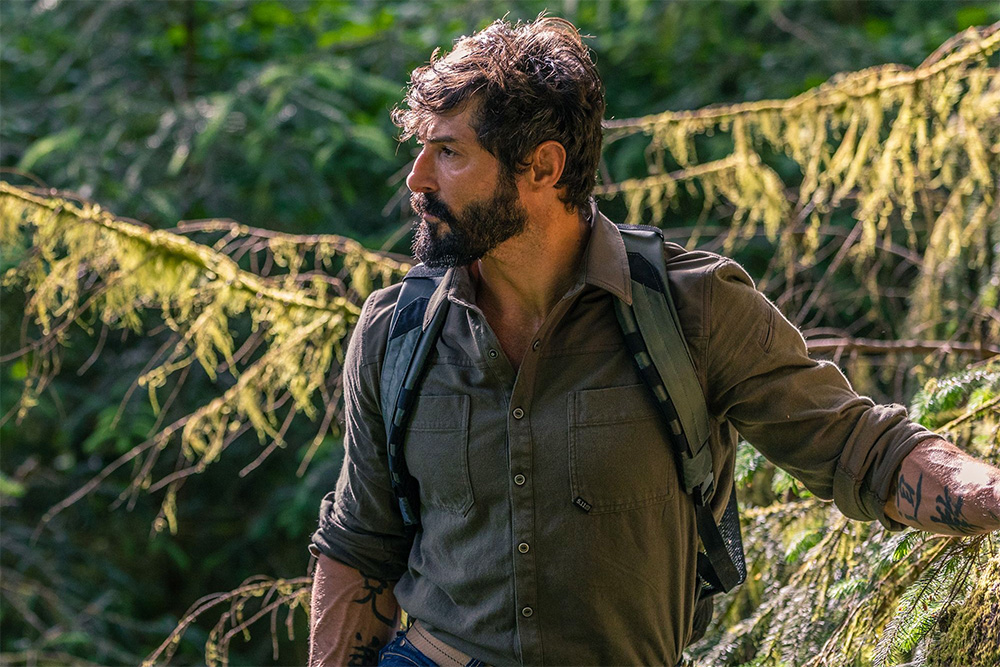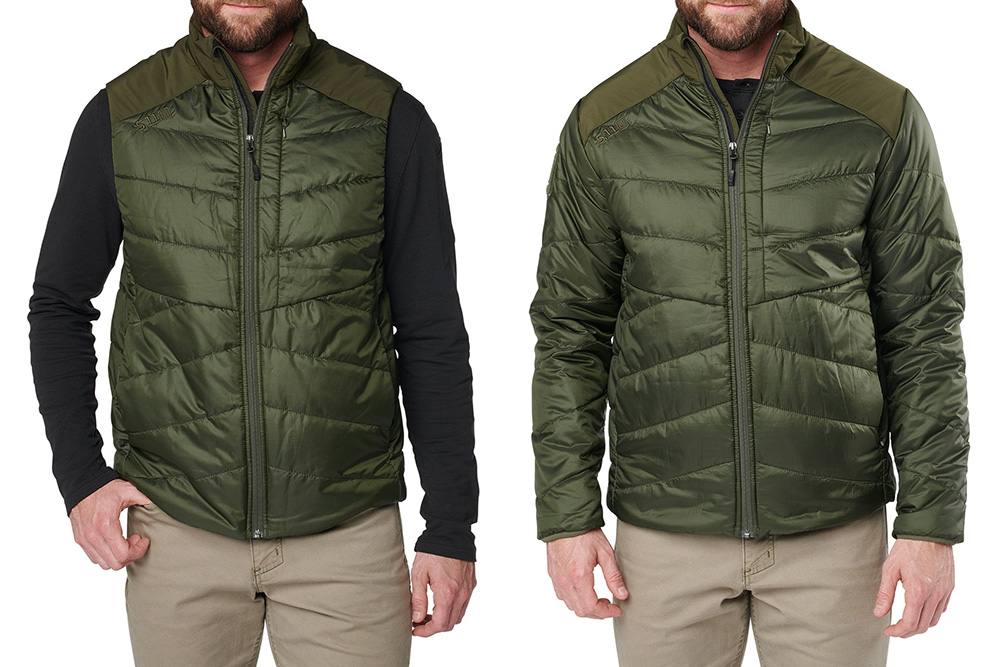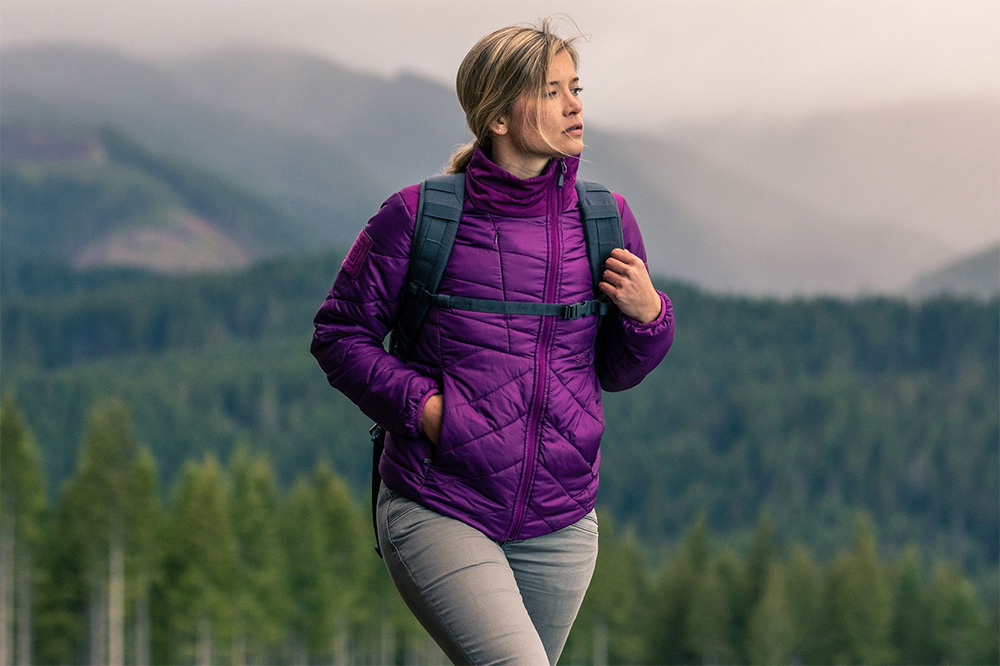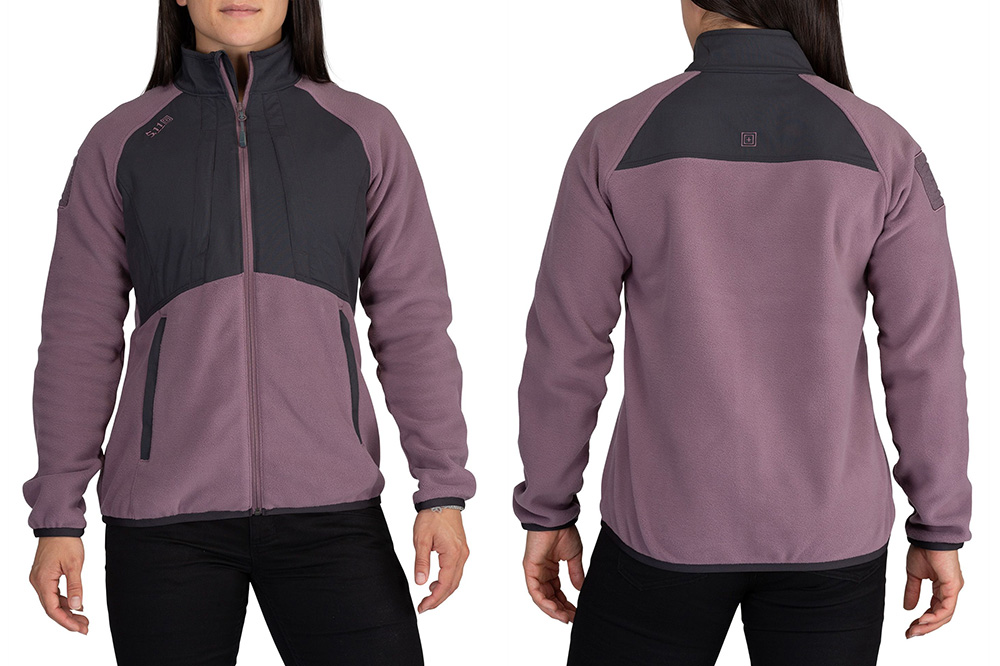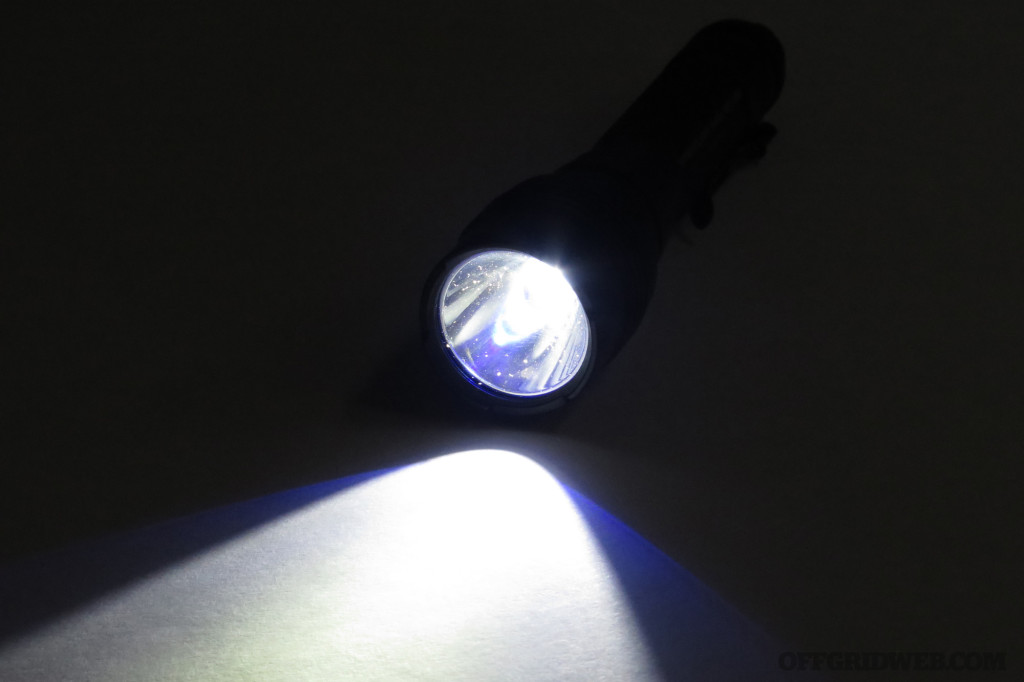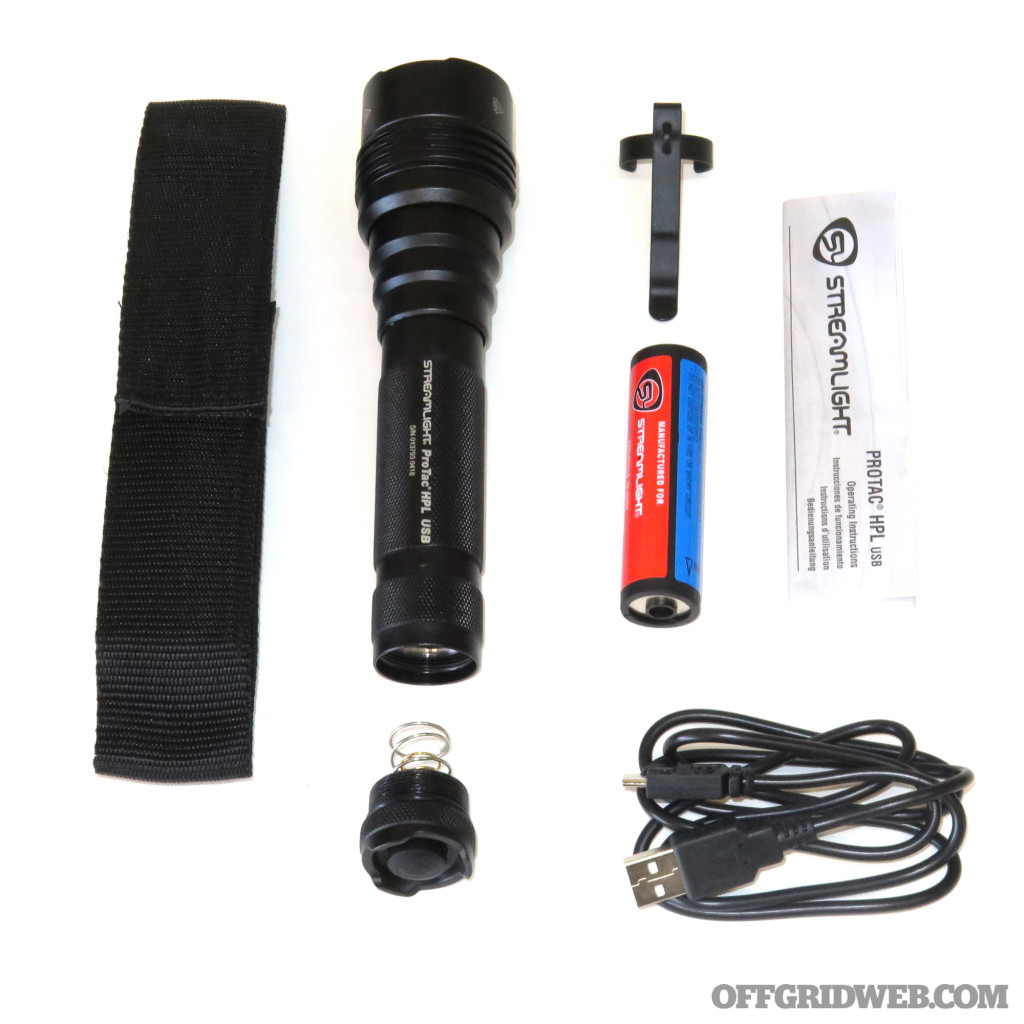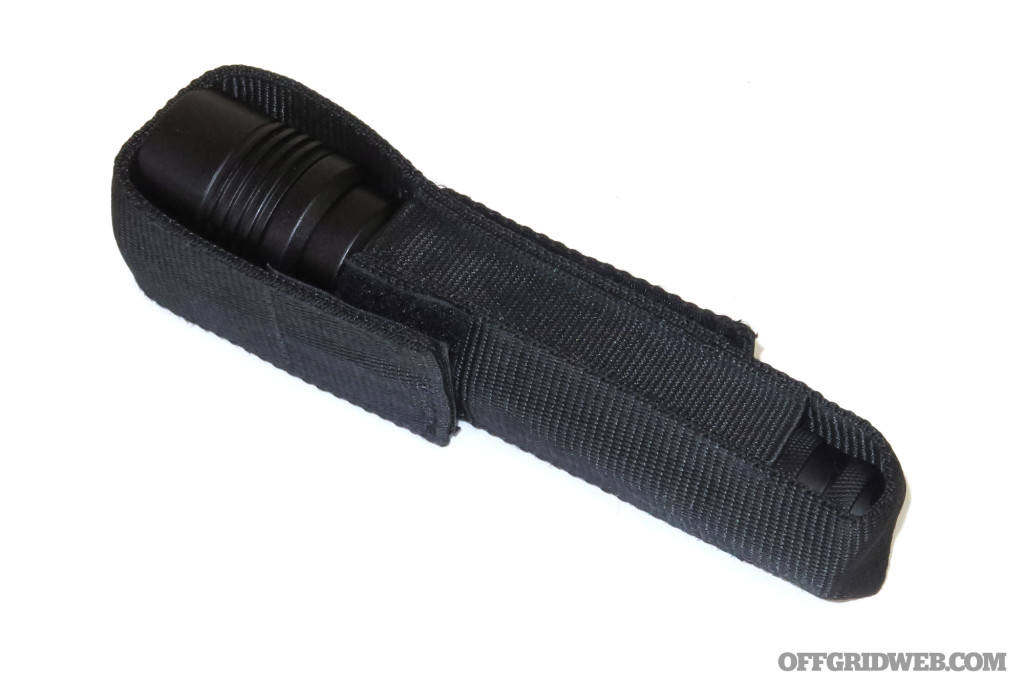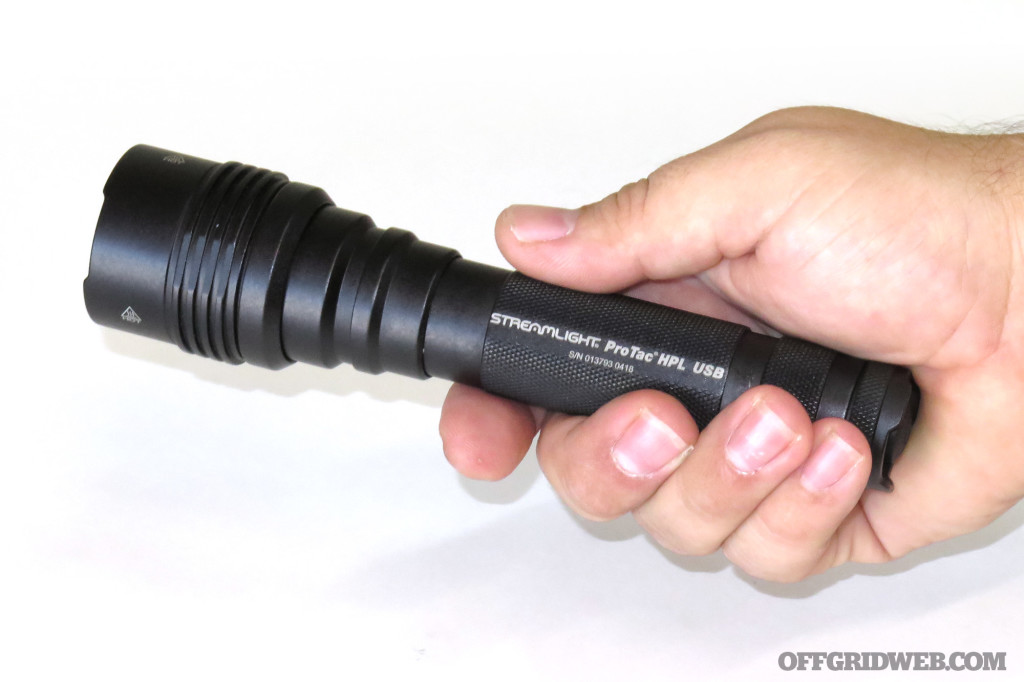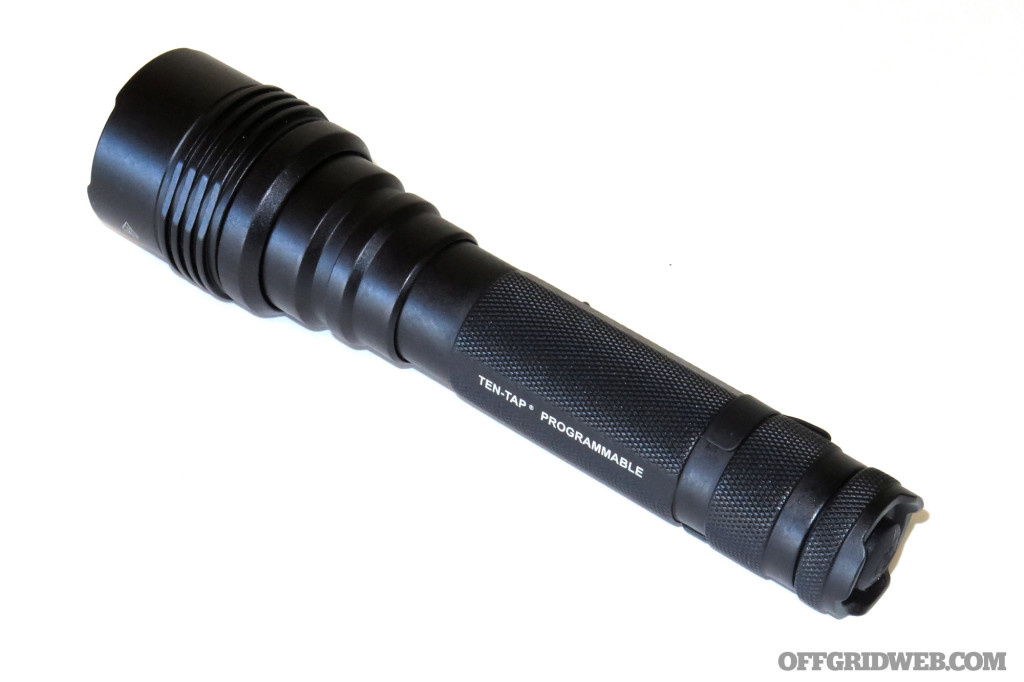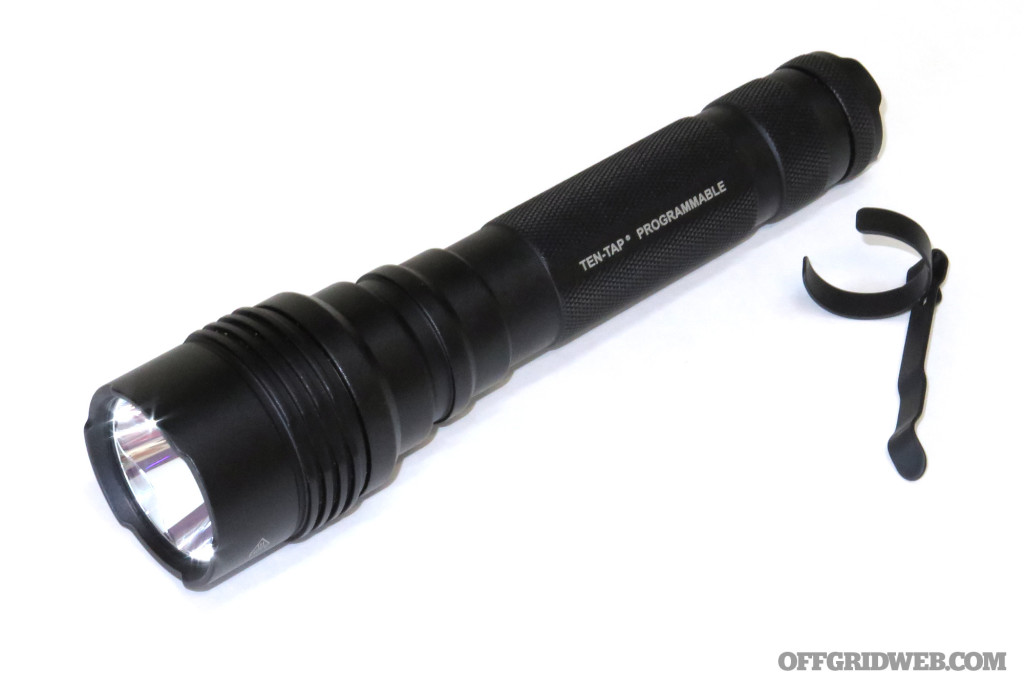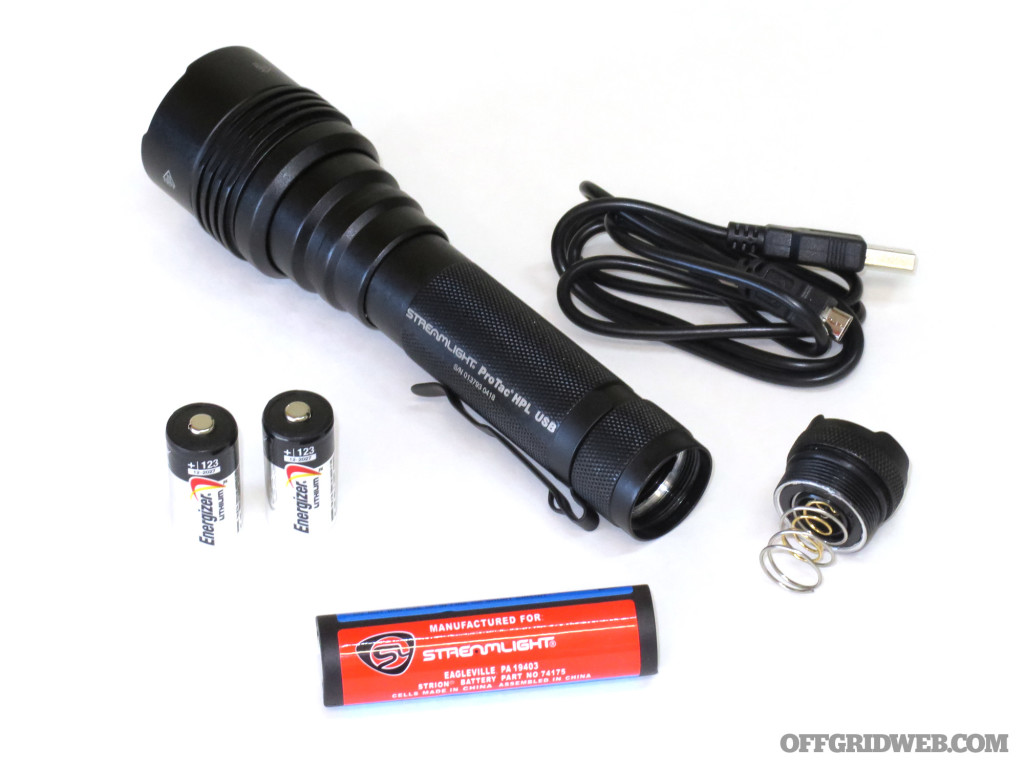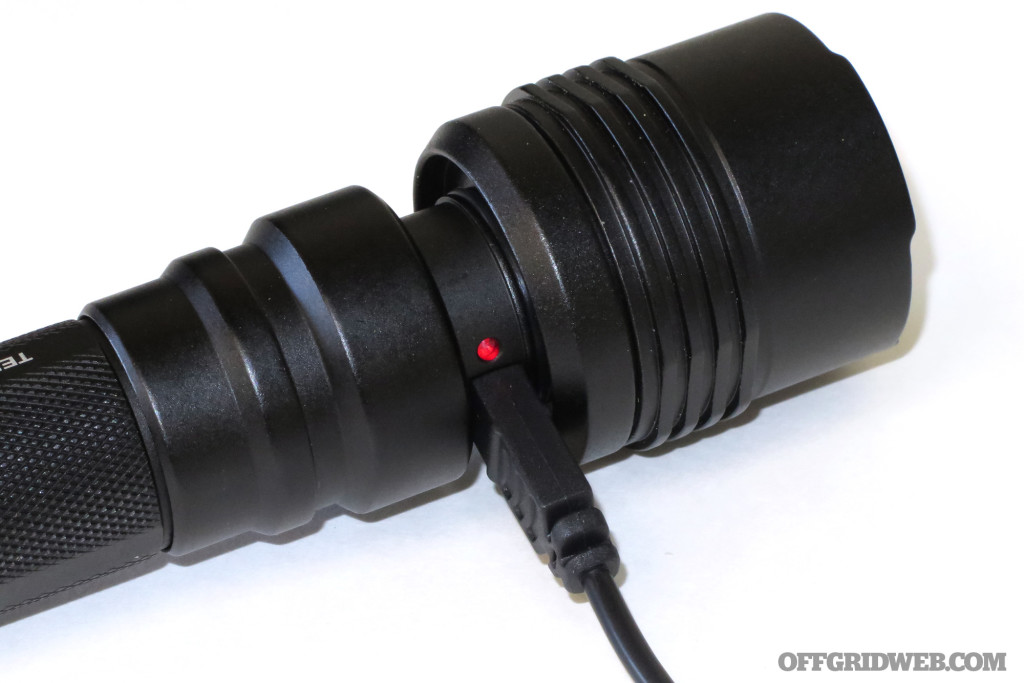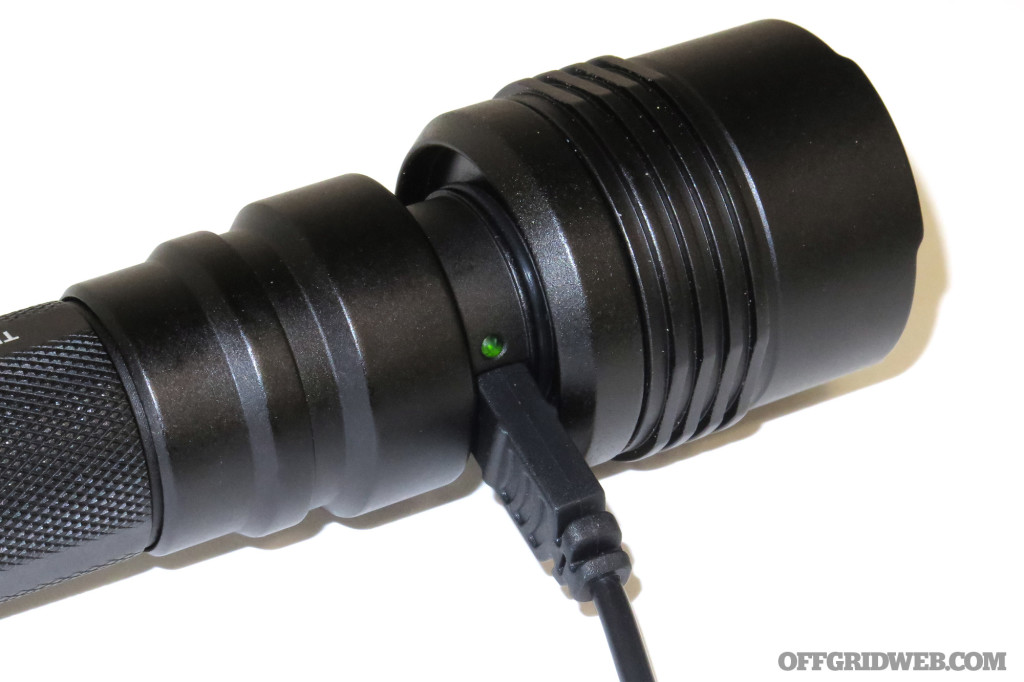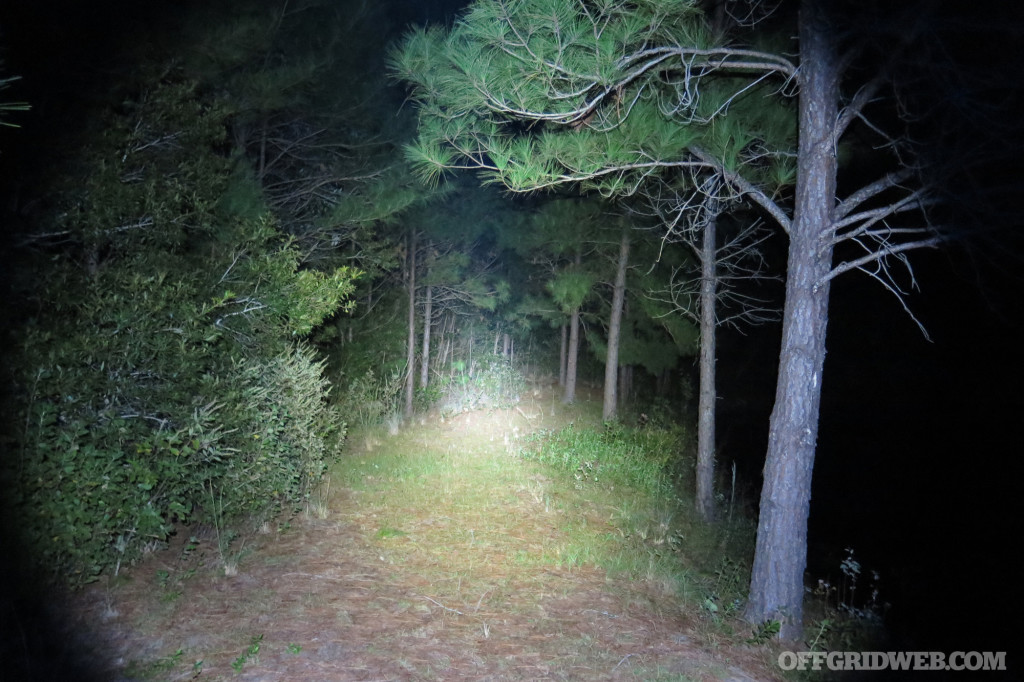Even if you’re a primitive survival expert who lives completely off the grid, it’s hard to deny the benefits of modern electronics. Instead of wielding a flaming torch at night, you can navigate with a pocket-sized flashlight. Rather than waiting months for the Pony Express to deliver a cross-country message, you can send a text from your smartphone in seconds. Electronics obviously provide a myriad of benefits — and we haven’t even started talking about laptops or washing machines.
The downside to these electronic devices is — you guessed it — electricity.
Whether you’re out backpacking for the day, there’s a blackout in your neighborhood, or the entire electrical grid has shut down, it’s wise to have some backup juice on hand. Without any battery power, all the electronics you have will become expensive paperweights in a few short hours.
Enter the portable battery pack, sometimes called a charger or power bank. In essence, these handheld gadgets are just lithium-based cells hooked up to some ports and surrounded in a protective shell. They’re designed to temporarily power your small USB-rechargeable devices — think flashlights, smartphones, tablets, cameras, GPS units, speakers, or even other smaller batteries.
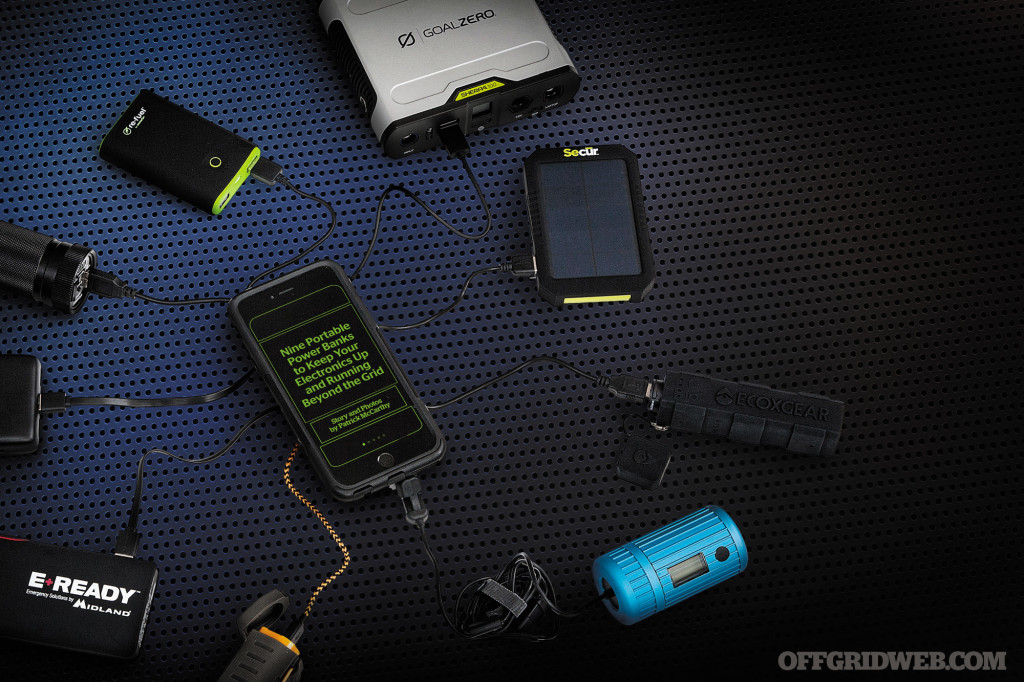
The Tech Talk
To understand and compare battery packs, we must first understand how they’re measured. Batteries are typically evaluated by three key metrics: volts (V), amps (A), and milliamp hours (mAh). Watts (W) also come into play for more powerful electronics, but aren’t really essential to discuss for USB-based devices.
To make these terms easier to comprehend, we can use an analogy that compares a battery to a pressurized tank of water. In this analogy, volts (V) are the amount of pressure in the tank, forcing water out through a hole. Amps (A), also called current, determine the size of the hole in the tank, and tells us the amount of water that drains out in a second (or an hour). Watts (W) refer to the power of the stream, and are determined by both the pressure (V) and the hole size (A). Milliamp hours (mAh) measure the tank’s storage capacity — or how many hours it can be allowed to drain at a set rate before running out of water.
So, by stating that a USB port on a battery is rated at a maximum of 5V and 1A, we’re defining the maximum amount of electricity that can flow out of it. This determines how much power it can impart to your electronic devices at a given moment.
On the other hand, by stating that a battery has a 5,000-mAh capacity, we’re defining how many times it can refill your electronic devices. Of course, this depends on the “pressure” in our system, as a higher voltage draw will empty the battery faster. So, mAh is usually listed at a predetermined nominal voltage — in the case of lithium batteries, it’s typically measured at 3.7V. This nominal voltage ensures consistent measurements of mAh capacity from one battery to the next.
The Easy Explanation
We realize this can be extremely confusing, so we’ll recap. For the purposes of portable battery packs …
- Volts (and watts) determine the type of devices the battery can power. Large electronics — like microwaves and refrigerators — require 120V, and hundreds or even thousands of watts. A standard USB port will provide 5V maximum.
- Amps define how quickly a device will charge when plugged into the battery. A 1A port will generally charge much slower than a 2.1A port.
- Milliamp hours determine a battery’s total charging capacity. More mAh means larger capacity. For reference, an iPhone 6 battery is 1,810 mAh, so a 5,000 mAh battery pack could theoretically recharge that iPhone around 2.7 times.
The Recharge Rundown
Now that you know the electronic inner workings, we can get into analyzing some popular battery packs on the market. We selected nine battery packs of varying sizes and capacities, comparing them based on form, function, added features, and cost.
Digipower Re-Fuel RF-A78
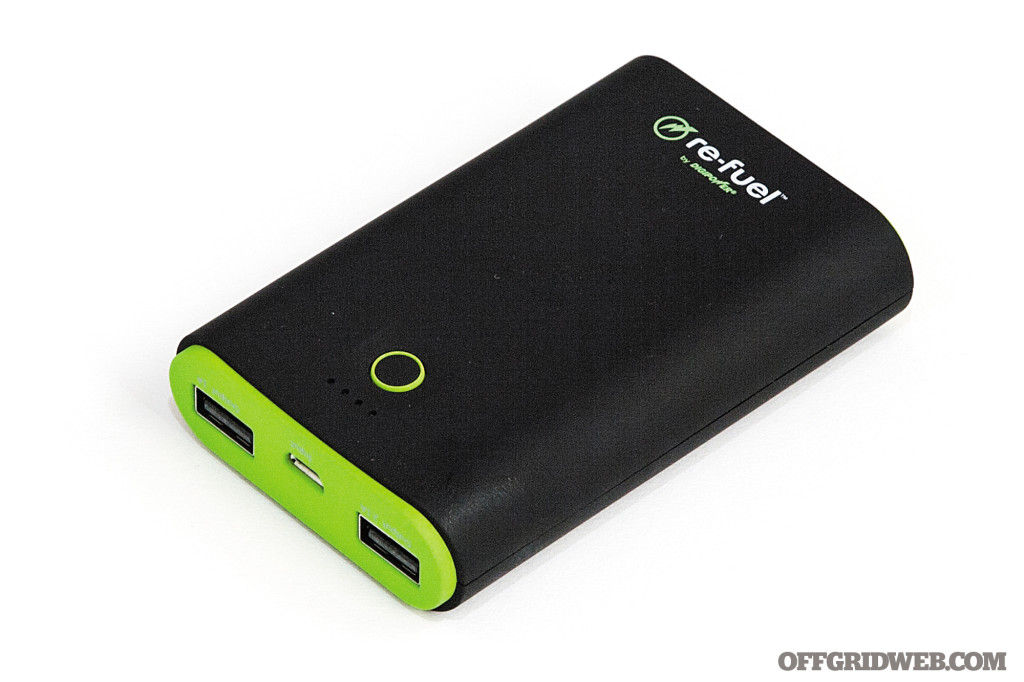
Dimensions
3.8 by 2.4 by 0.8 inches
Weight
6.2 ounces
Battery Type
Lithium-ion (Li-ion)
Milliamp Hour Capacity (mAh)
7,800 mAh at 3.7V
Output Ports
5V 2.1A USB, 5V 1A USB
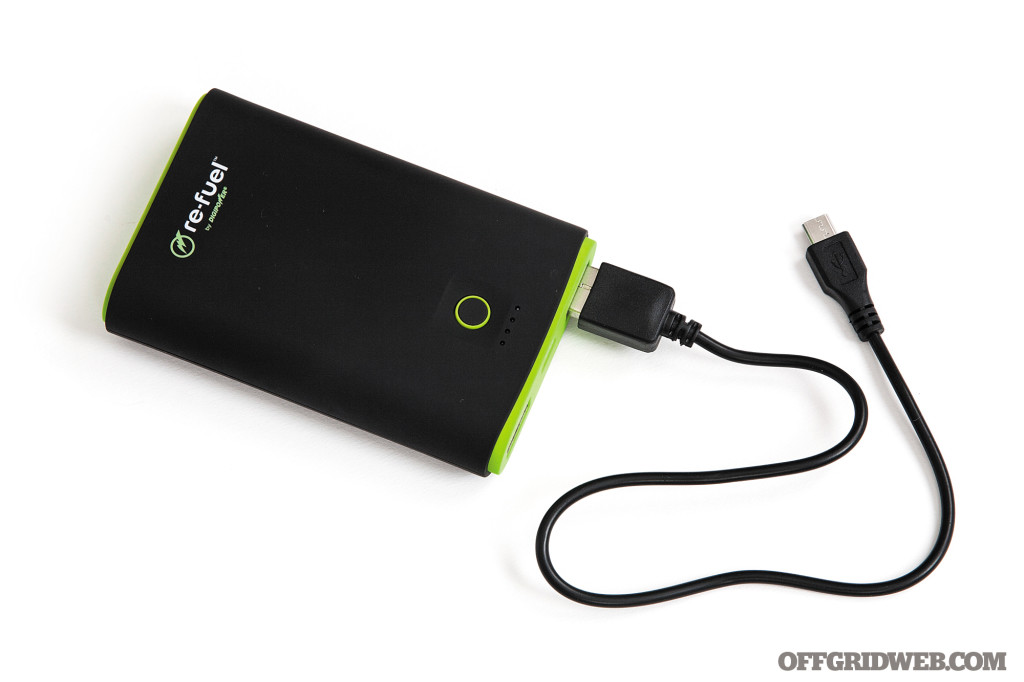
Input Port
5V 1A micro USB
Actual Simultaneous USB Output
2.1A and 1A (as advertised)
Included Accessories
USB-to-micro-USB cable
Special Features
4-LED charge indicator
MSRP
$40
URL
www.re-fuel.com
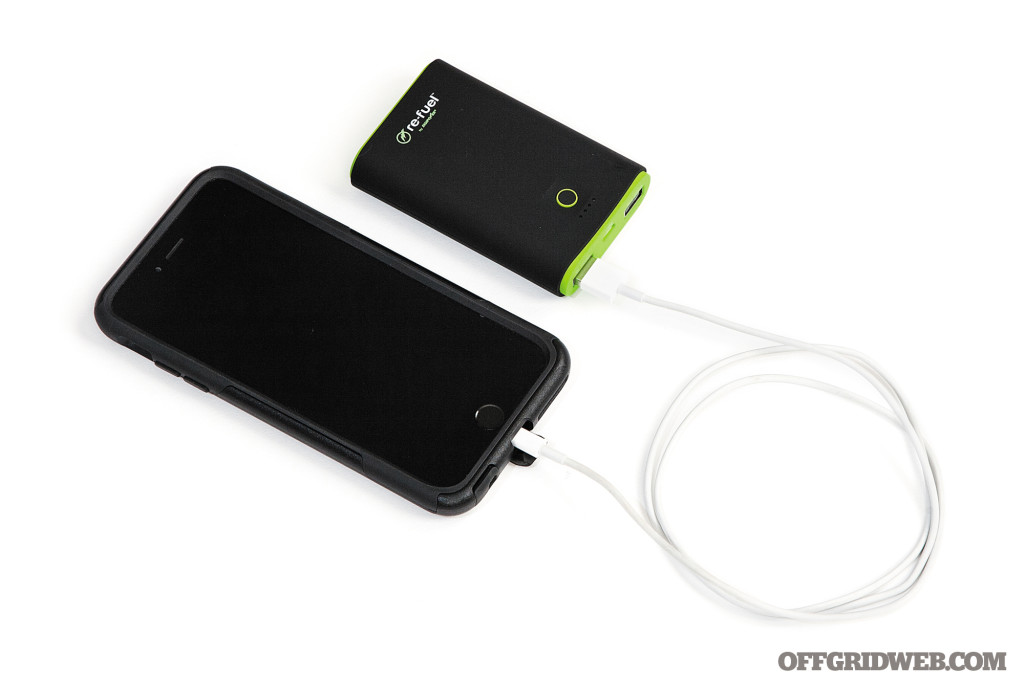
The Digipower Re-Fuel is composed of a 7,800-mAh Li-ion battery pack, encased in a rubberized housing with bright green endcaps. It fits nicely into the palm of your hand or your pocket, and offers impressive capacity given its low 6.2-ounce weight. There are dual USB output ports, controlled by a single push-button on the front of the pack. Tapping the button allows the user to check charge level via four white LEDs underneath it. The Re-Fuel pack’s simple design won’t win any innovation awards. However, it serves its purpose well, delivering plenty of juice to recharge most smartphones three times.
Pros:
- Compact and lightweight
- High capacity given its size
Cons:
ECOXGEAR EcoCharge+
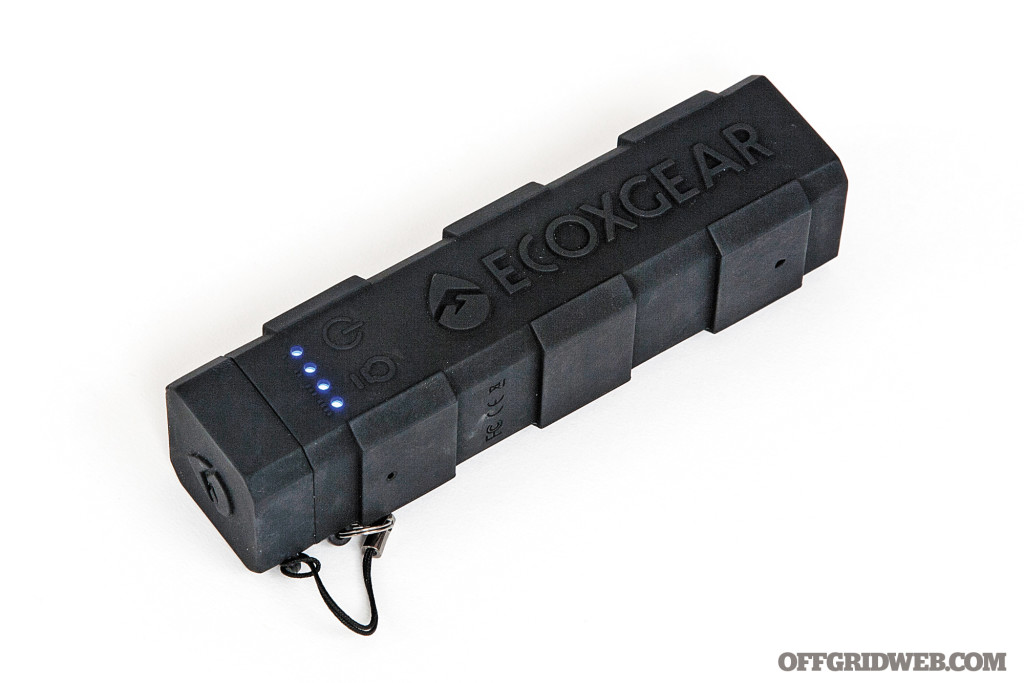
Dimensions
4.9 by 1.3 by 1.2 inches
Weight
4.7 ounces
Battery Type
Lithium ion (Li-ion)
Milliamp Hour Capacity (mAh)
3,200 mAh at 3.7V
Output Ports
5V 1A USB
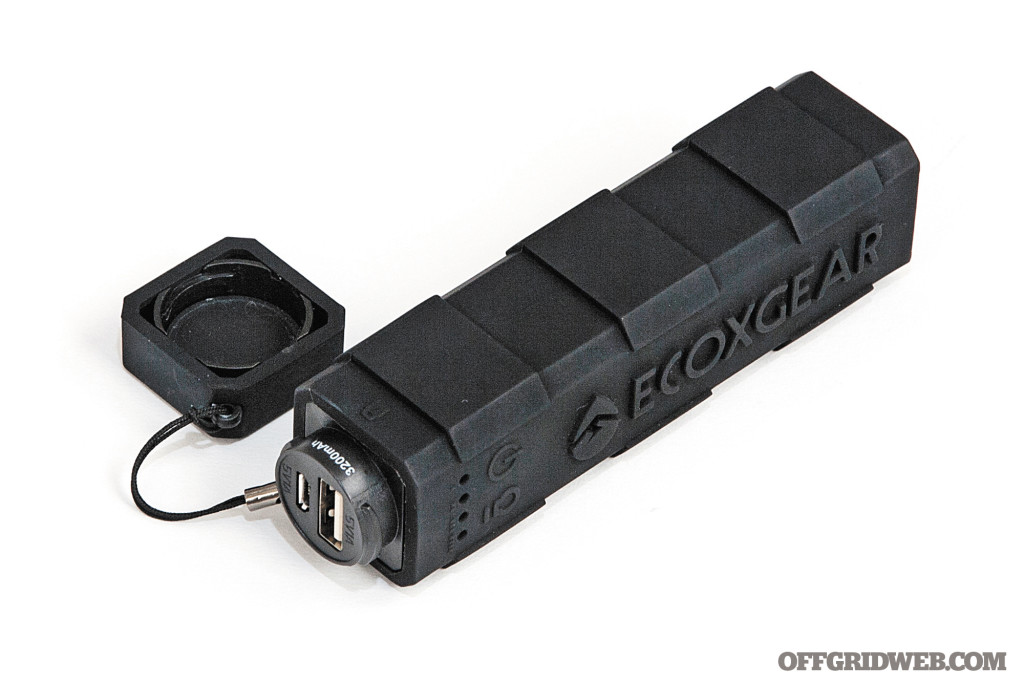
Input Port
5V 1A micro USB
Actual Simultaneous USB Output
1A (as advertised)
Included Accessories
USB-to-micro-USB cable, wrist lanyard
Special Features
Waterproof (IP67 – up to 1-meter), 4-LED charge indicator, 150-lumen CREE LED light
MSRP
$40
URL
www.ecoxgear.com
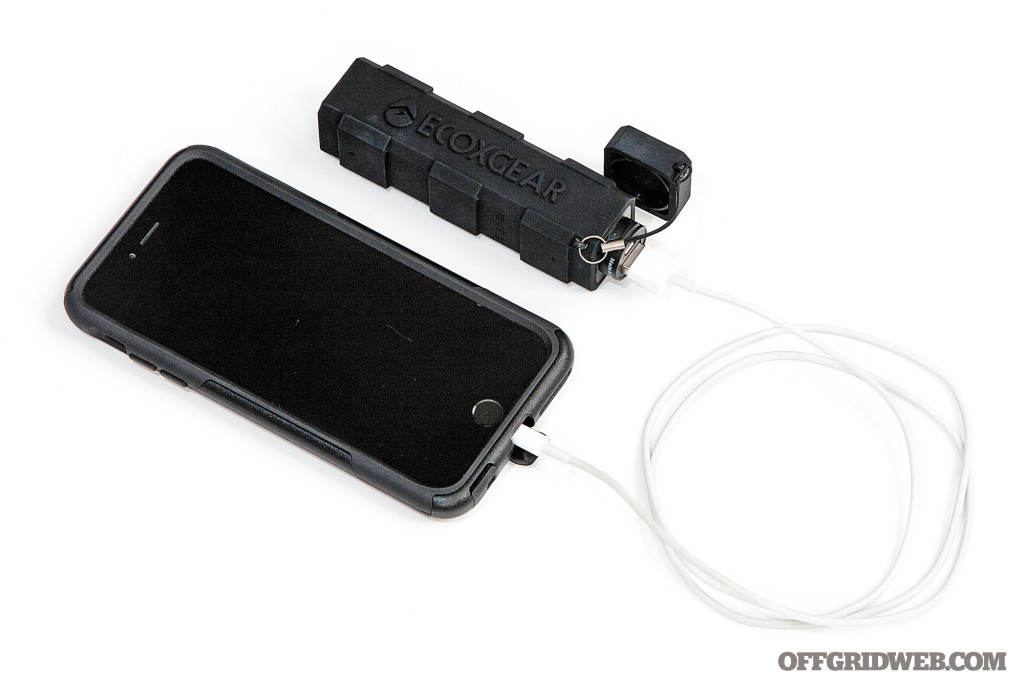
Why use a battery to recharge your flashlight, when your battery already is a flashlight? That’s the philosophy behind the EcoCharge+, and it’s surprisingly effective. The 150-lumen CREE LED light offers strong intensity, an even beam pattern, and four modes: low, high, flashing, and SOS. Its exterior offers good texture and ergonomics, plus a waterproof twist-on cap that reveals a single USB output. Unfortunately, the battery didn’t wow us with its small 3,200-mAh capacity and slow 1A charging speed. We’d consider this a rechargeable flashlight that happens to have USB output, rather than a true battery pack.
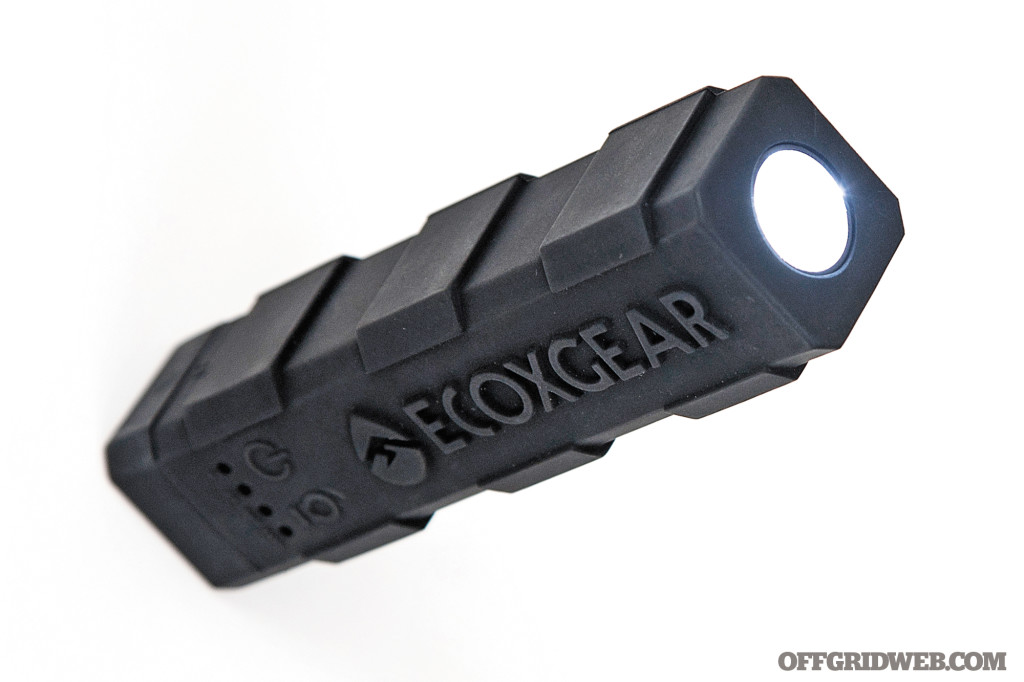
Pros:
- Grippy and waterproof rubberized exterior
- Works well as a flashlight
Cons:
- USB port mounting isn’t sturdy, wiggling noticeably with a cable inserted
- Small capacity, slow 1A charging speed
Goal Zero Sherpa 100
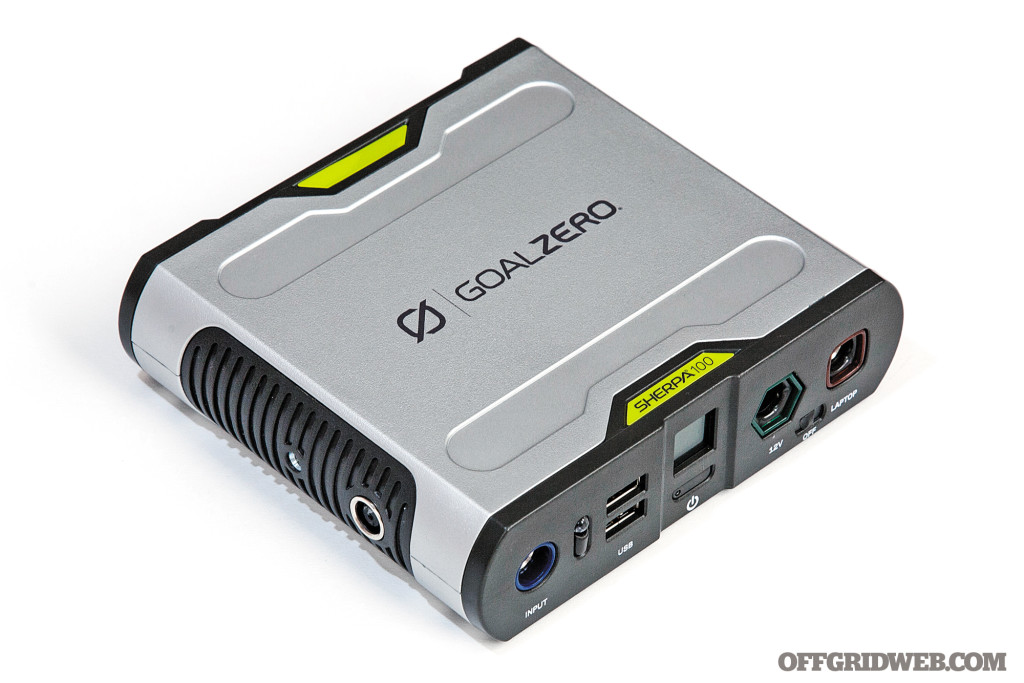
Dimensions
5.8 by 5.3 by 1.5 inches
Weight
30.8 ounces
Battery Type
Lithium Nickel Manganese Cobalt (Li-NMC)
Milliamp Hour Capacity (mAh)
26,400 mAh at 3.7V (or 8,800 mAh at 11V)
Output Ports
5V 2.1A USB (two), 6mm 12V 10A port, 7.4mm 19V 6A laptop port, sidecar port for daisy-chaining or use with optional 110V AC inverter (sold separately)
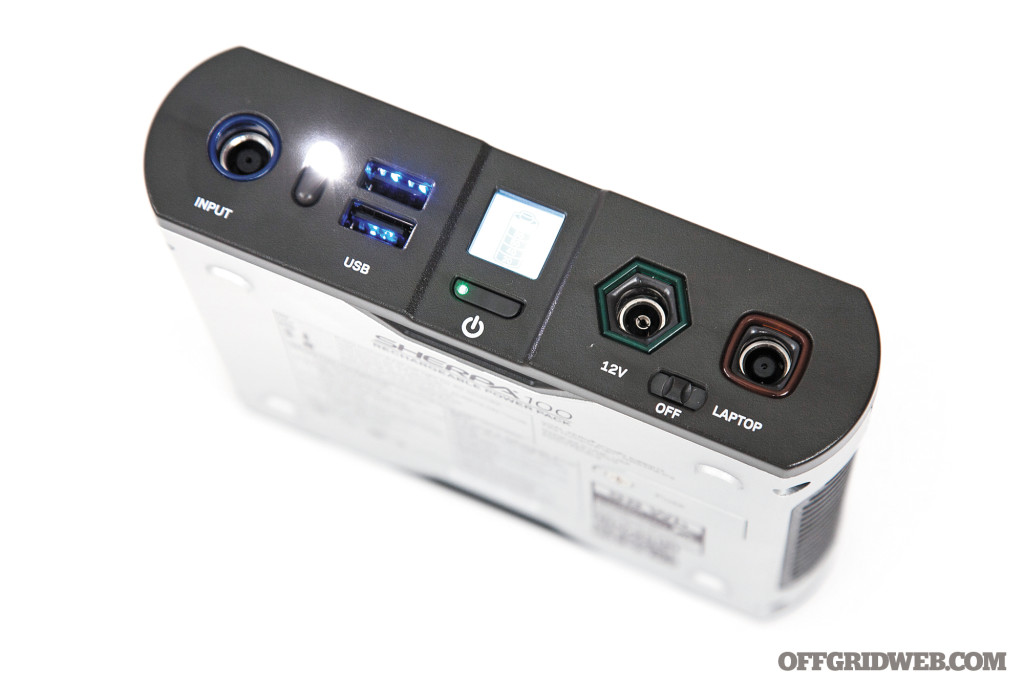
Input Port
15-22V up to 3A (from solar panels, car cigarette lighter port, or included charger)
Actual Simultaneous USB Output
2.1A and 2.1A (as advertised)
Included Accessories
Wall charger, laptop cable with four adapters, 12V cigarette lighter adapter
Special Features
Battery monitor LCD screen, replaceable 20A fuse, mini LED light, compatible with Goal Zero inverter and solar panels
MSRP
$350 (or $600 with pictured Nomad 20 solar panel and inverter)
URL
www.goalzero.com
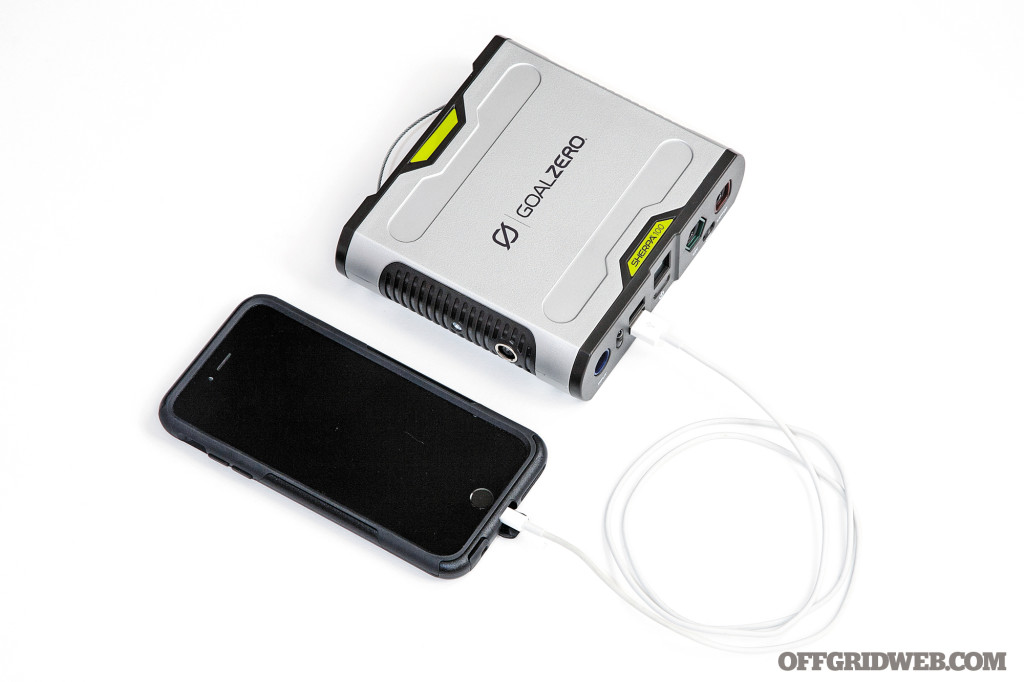
Let’s get one thing out of the way: The Sherpa 100 is expensive — to the tune of $350. However, take a look at its wealth of features, and you’ll understand the price. Its high-tech LG-brand Li-NMC cells are the same kind found in many electric cars, and they can pump out more than 110 volts and over 100 watts (enough for a 40-inch LCD TV or mini-fridge). This makes it ideal for quickly charging or powering larger devices, such as laptops, tablets, and digital SLR cameras. If you’re willing to shell out $600 for the upgraded Sherpa Solar Kit with AC inverter, this device can easily power your entire off-grid campsite almost indefinitely. And it’s still small and light enough to be loaded into your bug-out bag. It’s an investment, but this is the charger we’d grab in a long-term grid-down event if there were no generator in sight.
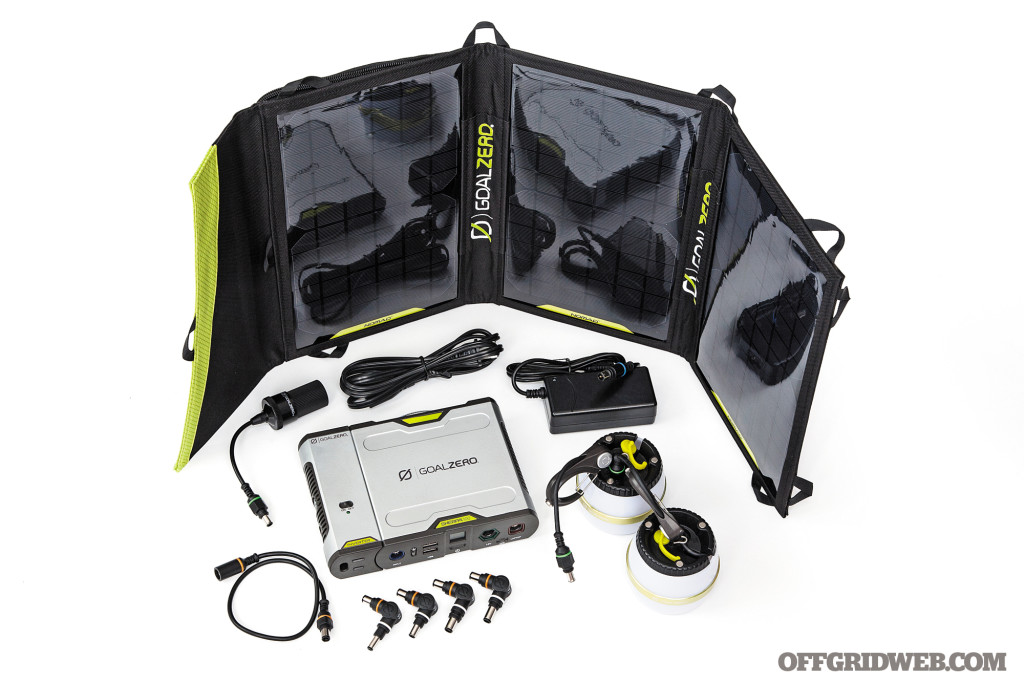
Shown above with optional Goal Zero add-ons: 12V inverter, solar panel, and LED lanterns. These items are sold separately.
Pros:
- Incredibly versatile
- Expandable with plug-and-play
- Goal Zero accessories
- Massive mAh capacity
- Strong voltage output
Cons:
- Pricey
- Quite heavy at 1.9 pounds
- No Apple laptop adapter available, since Apple refuses to license its MagSafe connector to third parties. Unless you have one of the new Retina MacBooks, which are powered via a USB-C port, you must recharge via the $50 inverter add-on.
Midland E+Ready EP100
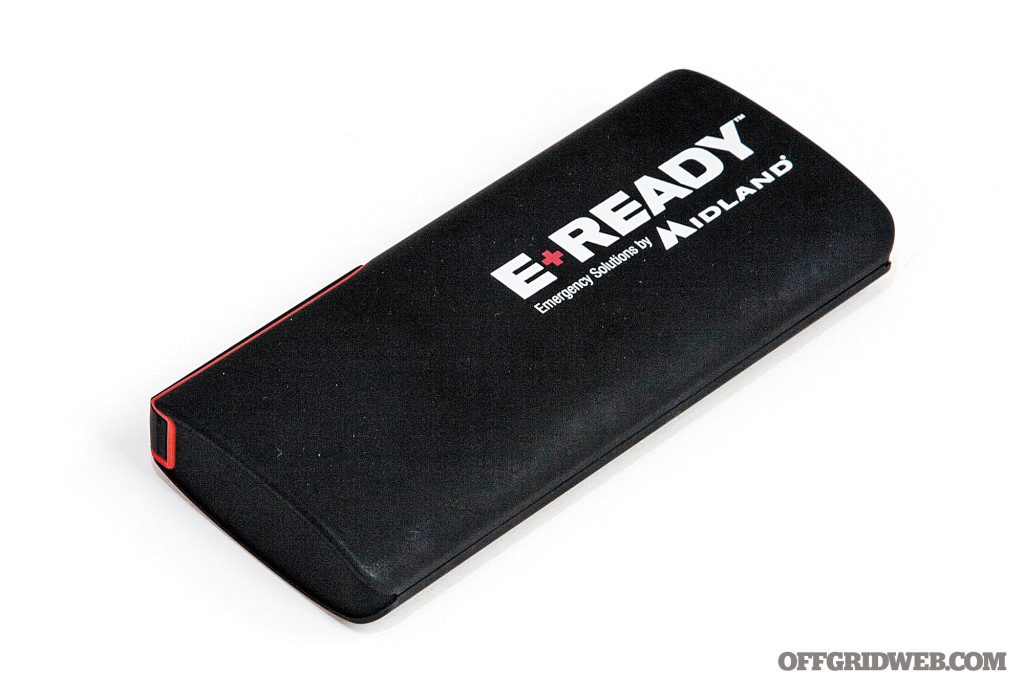
Dimensions
5.7 by 2.6 by 0.9 inches
Weight
8.5 ounces
Battery Type
Lithium ion (Li-ion)
Milliamp Hour Capacity (mAh)
10,400 mAh at 3.7V
Output Ports
5V 2.1A USB, 5V 1A USB
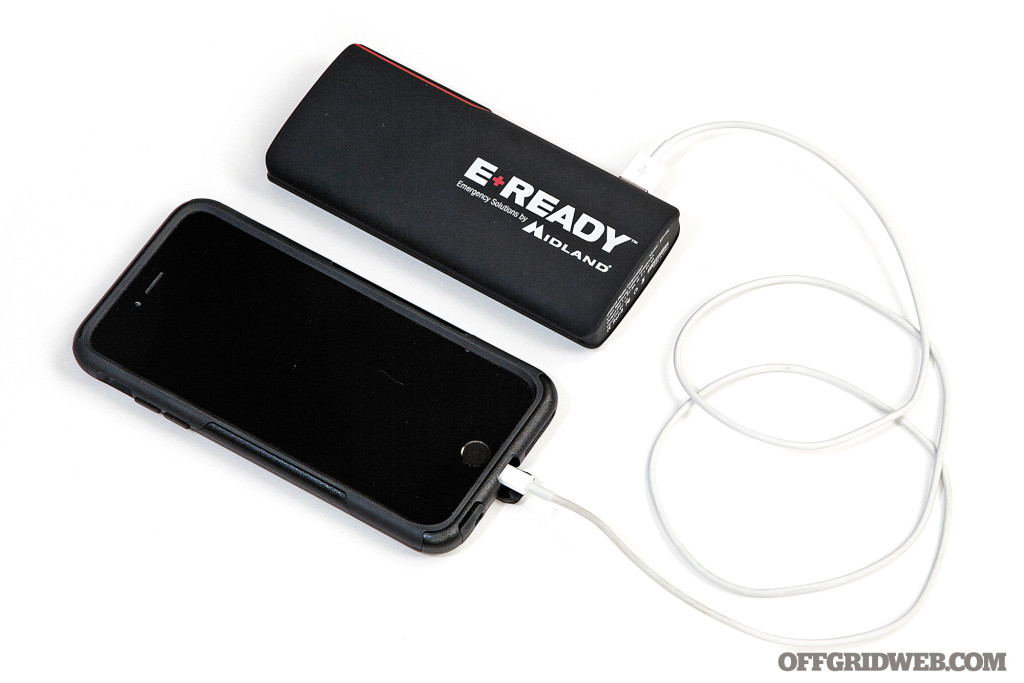
Input Port
5V 1A micro USB
Actual Simultaneous USB Output
2.1A and 1A (as advertised)
Included Accessories
USB-to-micro-USB cable
Special Features
4-LED charge indicator, 100-lumen fold-out LED light
MSRP
$50
URL
www.midlandusa.com
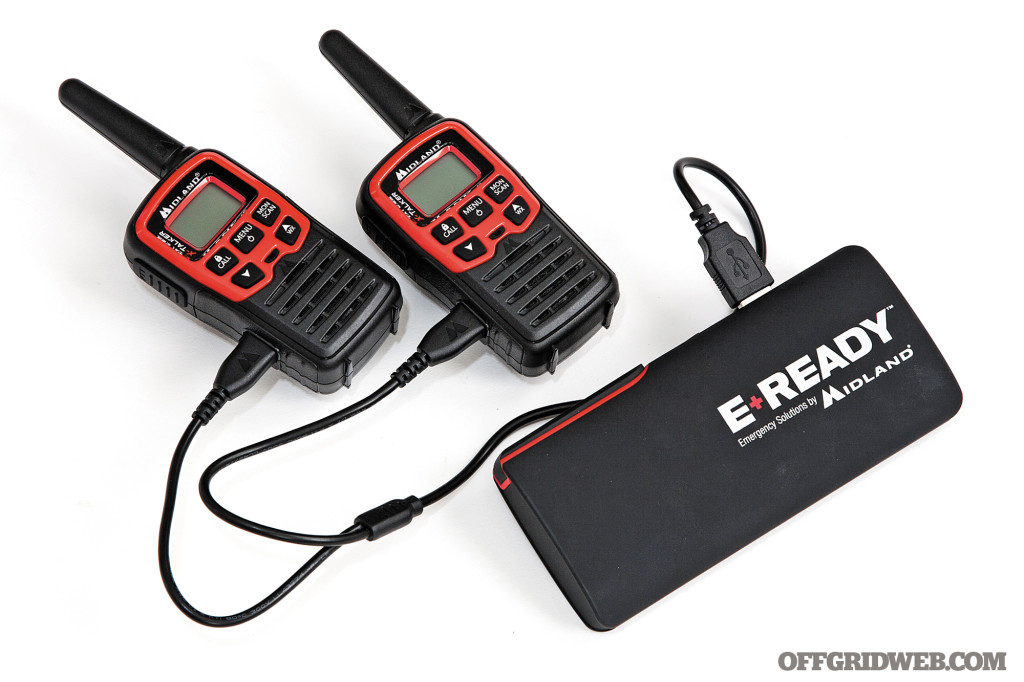
Midland — a company known for its portable radios — has branched out into the emergency-preparedness market with its new E+Ready line. The EP100 charger uses a 10,400-mAh Samsung-brand lithium battery, with two USB output ports. Its exterior dimensions are comparable to a large smartphone, so it fits snugly into pockets and pouches. The EP100 also features a fold-out flood light, with four LEDs that produce 100 lumens. By standing the pack on end, the light can provide hands-free illumination for a workspace — extremely useful for preparing food, working with tools, or reading maps. However, it tends to fold open unexpectedly, since it lacks a retention clip or detent. Otherwise, the EP100 is a strong contender with no substantial flaws.
Pros:
- Large battery capacity
- Bright LED flood light is useful for cooking or reading
Cons:
- Light tends to fold open on its own during transport, which could result in accidental damage
MyCharge All Terrain
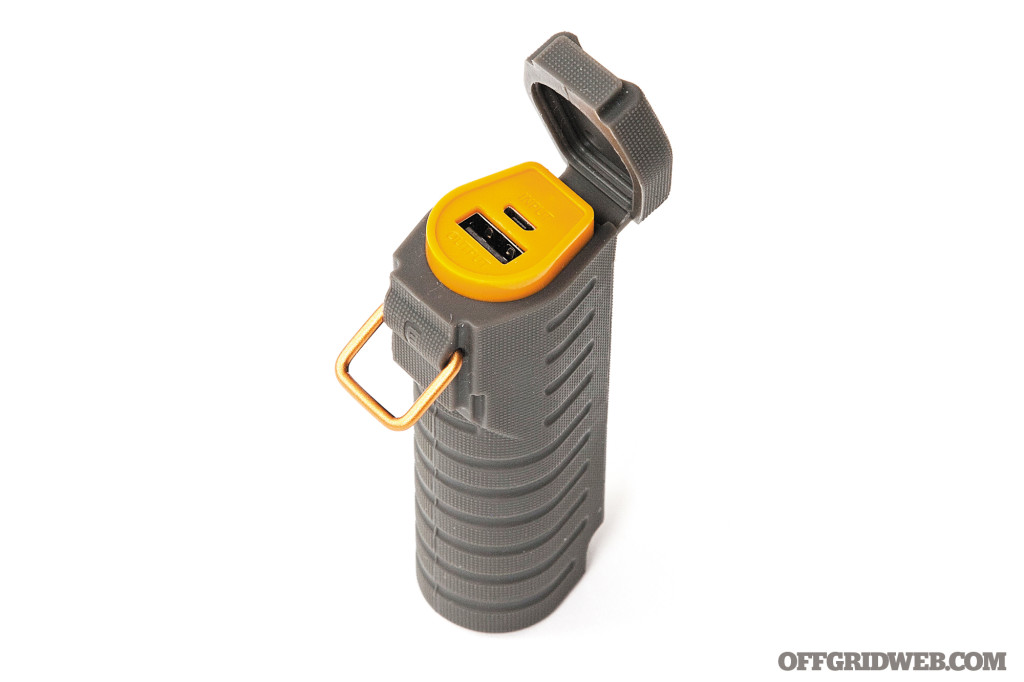
Dimensions
4.0 by 1.5 by 1.1 inches
Weight
3.8 ounces
Battery Type
Lithium ion (Li-ion)
Milliamp Hour Capacity (mAh)
3,000 mAh at 3.7V
Output Ports
5V 2.1A USB
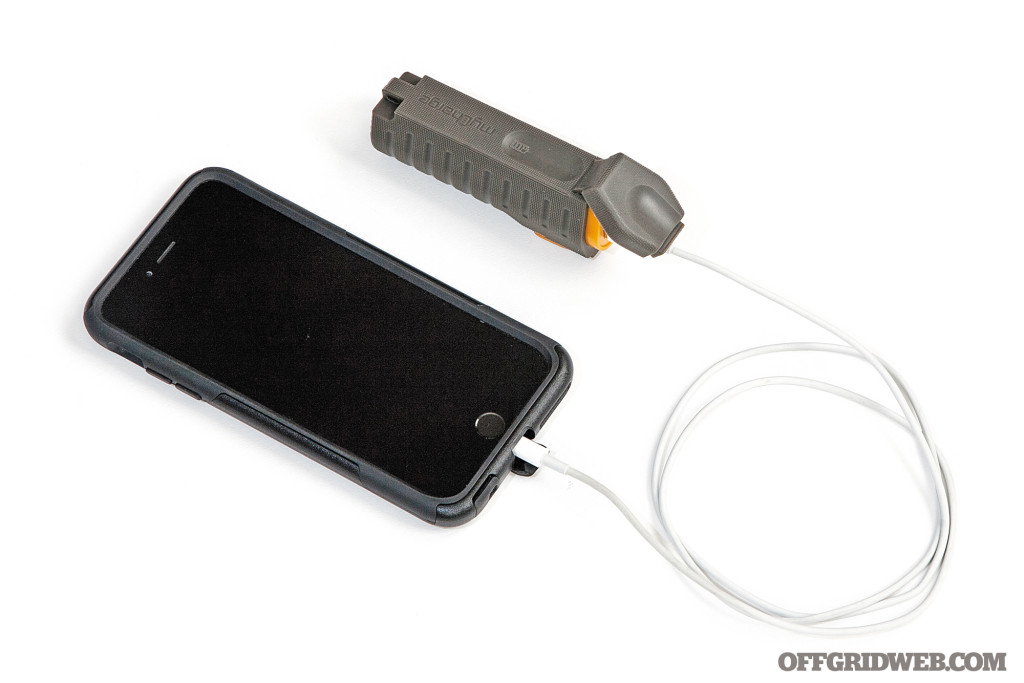
Input Port
5V 2.1A micro USB
Actual Simultaneous USB Output
2.1A (as advertised)
Included Accessories
USB-to-micro-USB cable, wrist lanyard
Special Features
Waterproof (IP68 — over 1 meter), 4-LED charge indicator
MSRP
$40
URL
www.mycharge.com
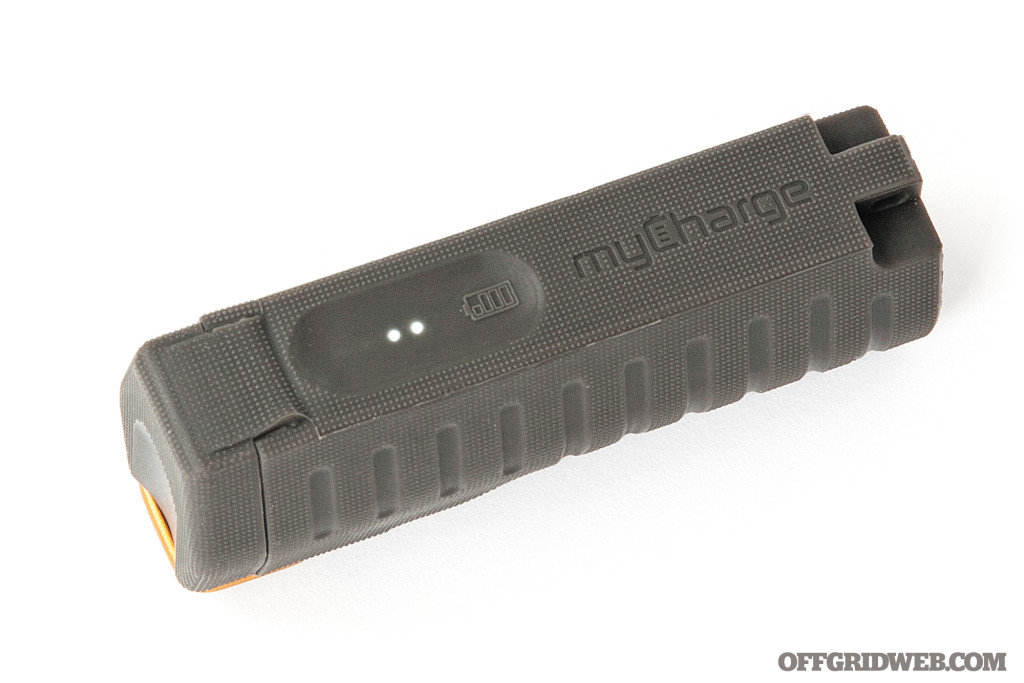
With a nifty design reminiscent of a cigarette lighter or cigar torch, the MyCharge All Terrain uses a flip-up lid secured by a retention bar. Underneath the waterproof lid, you’ll find an orange surface that houses a single USB output port. Pressing the battery symbol on the opposite side turns on the power, and charge level is displayed on LEDs above this button. Going along with the lighter analogy, it would have made sense to position the power switch where your thumb falls on the front of the charger, instead of the back side, but that’s a minor gripe. More relevant is the small 3,000-mAh capacity — barely enough to recharge larger smartphones. Fortunately, its 2.1A output charges your devices quickly, and its 2.1A input allows for very quick refills from a wall charger.
Pros:
- Pliable rubber exterior is waterproof, dust-proof, and impact-resistant
- Charges quickly via 2.1A output
- Recharges quickly via 2.1A input
Cons:
PowerTraveller PowerMonkey Explorer 2
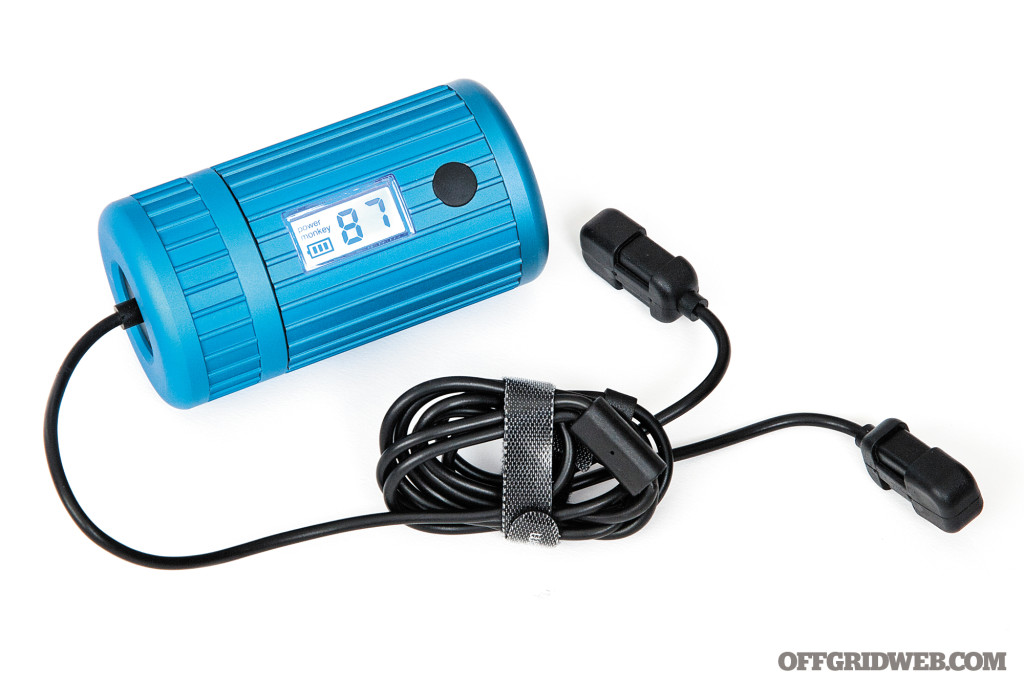
Dimensions
3.2 inches tall by 1.8 inches diameter
Weight
10.3 ounces
Battery Type
Lithium ion (Li-ion)
Milliamp Hour Capacity (mAh)
6,000 mAh at 3.7V
Output Ports
5V 2A USB
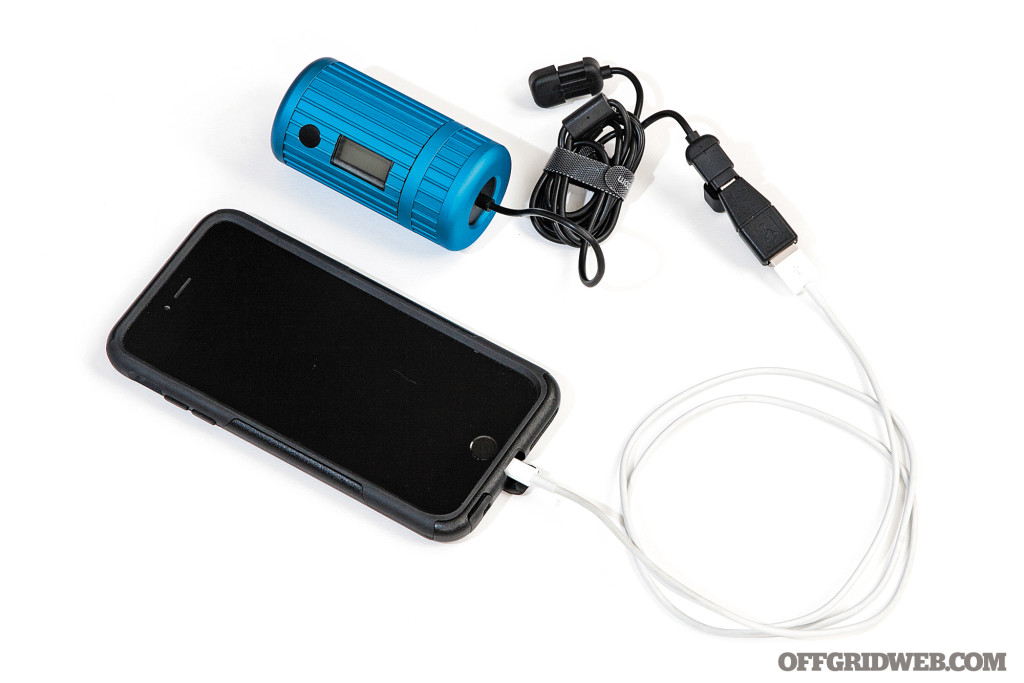
Input Port
5V 2A micro USB
Actual Simultaneous USB Output
1A (below advertised 2A spec)
Included Accessories
Custom waterproof micro USB in/out splitter cable, male and female micro USB to USB adapters
Special Features
Waterproof (IP67 — up to 1 meter), battery monitor LCD screen, compatible with optional bike mounting bracket
MSRP
$93
URL
www.powertraveller.com
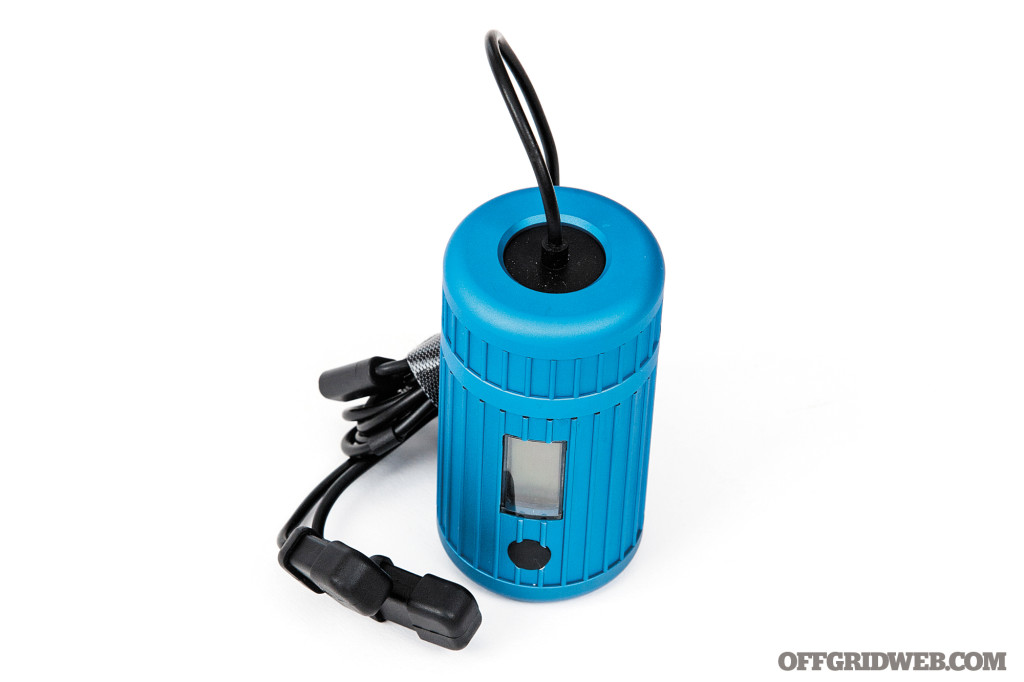
The PowerMonkey Explorer 2 was developed by U.K.-based company Powertraveller, which calls it “the toughest portable charger available.” A bold claim, but we can confirm that the PowerMonkey is indeed tough. Its anodized aluminum exterior is fully waterproof, including the supplied cable. Speaking of the cable, it uses a unique “bath plug-style” end, secured to the body with a screw-on metal cap. On the other end, the cable splits into a Y-connection with micro USB ports — a female input and a male output. For connecting full-size USB devices, you’ll need to carry separate adapters, which are easy to misplace. Also, despite the advertised 2A output spec, we measured the USB output at only 1A. The PowerMonkey also charged an iPhone at speed comparable to other 1A chargers, so it seems this battery’s listed output amperage may be inaccurate or obtainable only with specific devices.
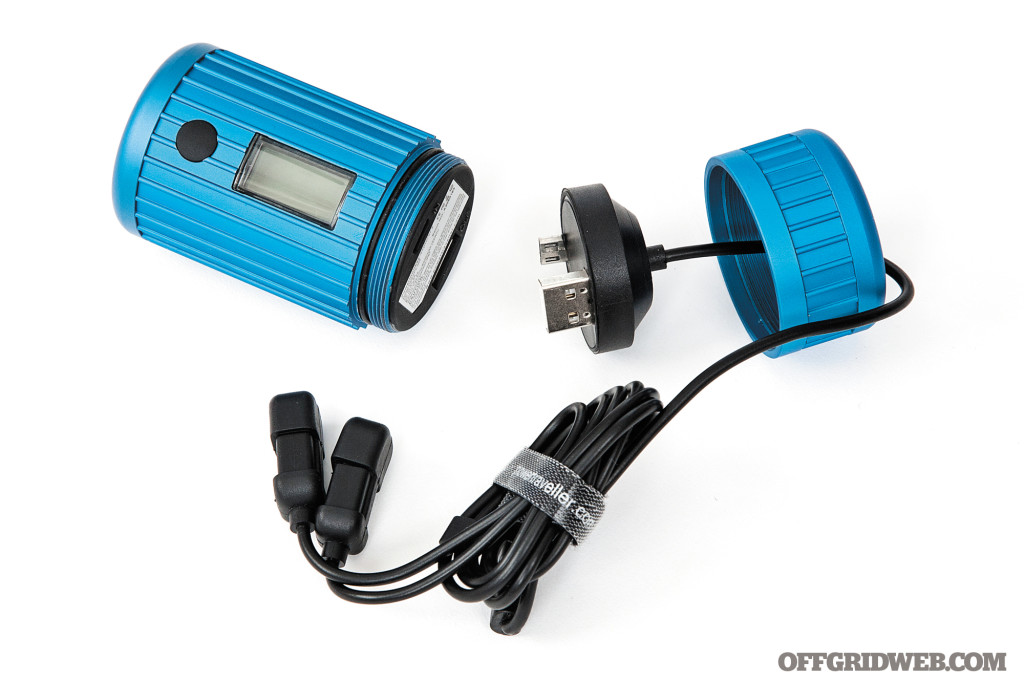
Pros:
- End-to-end waterproofing, including the cable
- Tough metal exterior available in four colors (black, white, red, and blue)
Cons:
- Our testing showed maximum output of 1A, half the advertised 2A output
- Important micro-USB-to-USB adapters are easy to misplace
RAVPower Ace Series 22,000 mAh
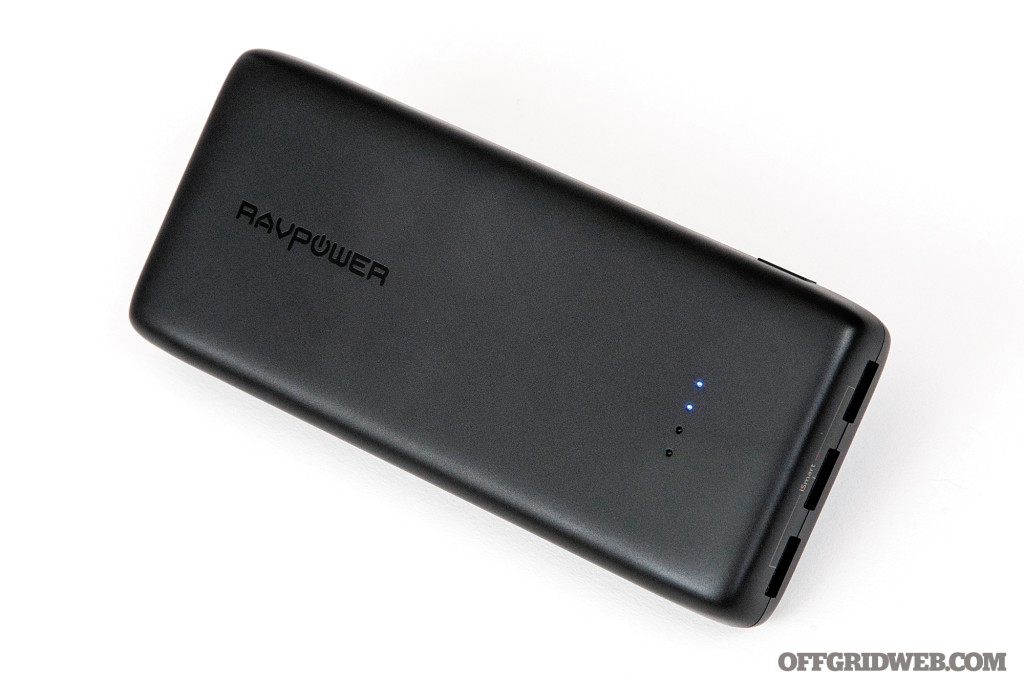
Dimensions
6.5 by 2.8 by 0.9 inches
Weight
14.6 ounces
Battery Type
Lithium-polymer (Li-poly)
Milliamp Hour Capacity (mAh)
22,000 mAh at 3.7V
Output Ports
5V 2.4A iSmart USB (three)
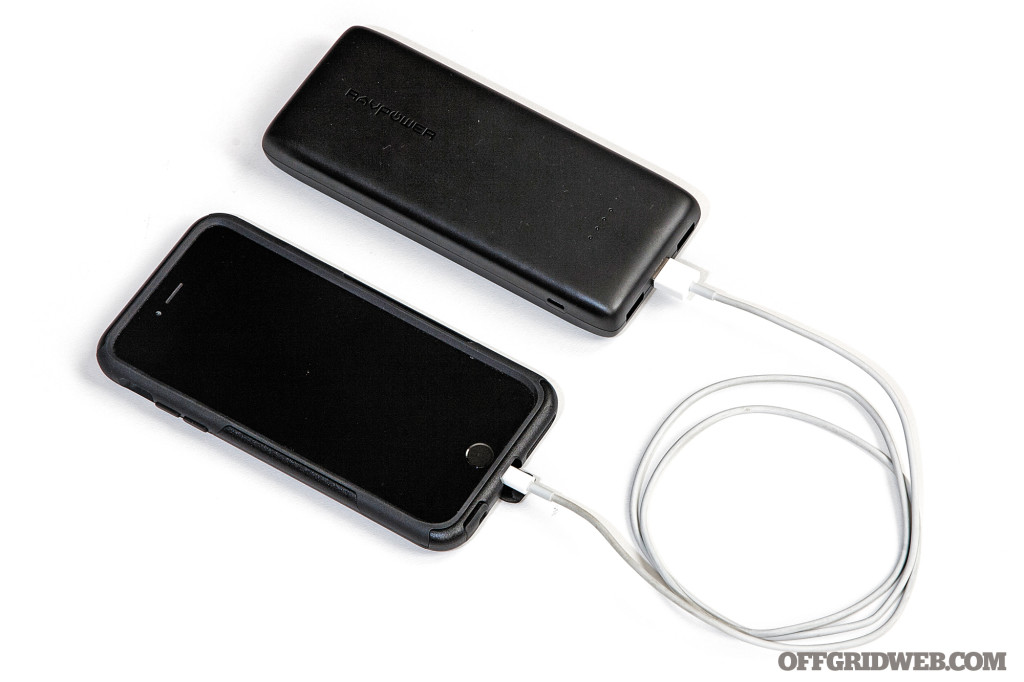
Input Port
5V 2.4A micro USB
Actual Simultaneous USB Output
2.4A, 2.4A, 1A (as advertised)
Included Accessories
Short and long USB-to-micro-USB cables, fabric carrying pouch
Special Features
4-LED charge indicator
MSRP
$40
URL
www.ravpower.com
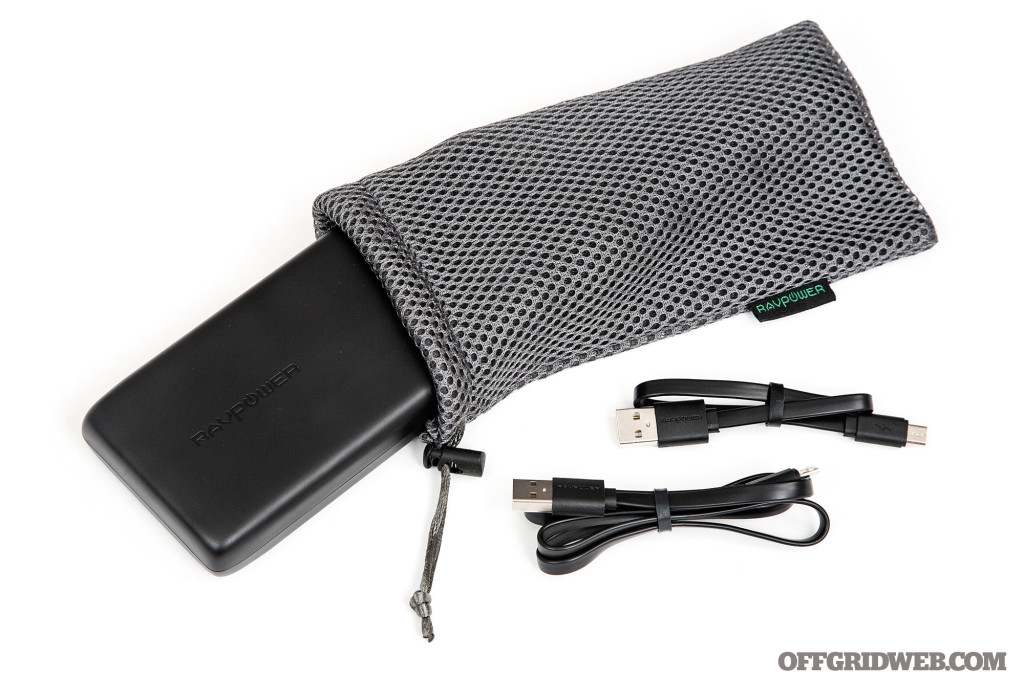
RAVPower’s Ace-series battery pack offers a huge 22,000-mAh capacity, thanks to its use of malleable and energy-dense Lithium-polymer cells. We’re told they’re from the same manufacturer as iPhone batteries and undergo the same quality-control checks. Three USB ports harness this power, allowing charging speed of up to 2.4A per port — the fastest of any battery we tested. Call us shallow, but our least favorite aspect of this pack is its exterior. RAVPower says the case uses a fire-resistant thermoplastic alloy from Germany, but no matter what you call it, it’s about as visually exciting as a stick of butter with USB ports on one end. Cosmetics aside, this battery kicks butt and takes names — and does so at an affordable price.
Pros:
- Enormous capacity at a low price
- High 5.8A simultaneous output allows full-speed charging of multiple devices at once
Cons:
- Exterior lacks visual appeal and tends to slide on smooth surfaces
- Heavy
Secur Solar Power SP-3009
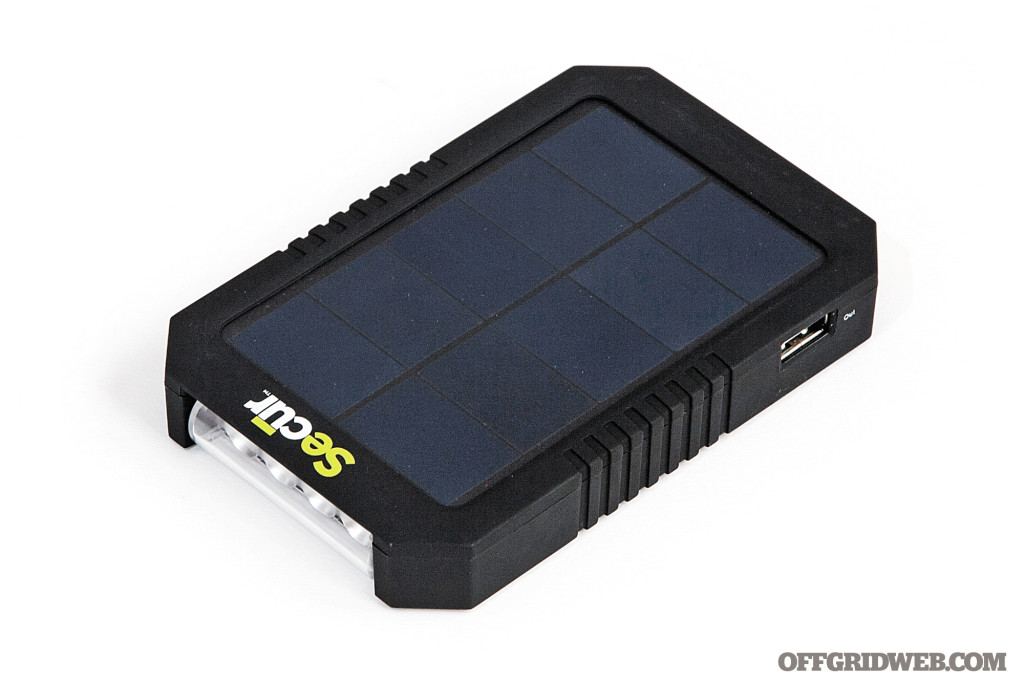
Dimensions
4.8 by 3.1 by 0.6 inches
Weight
6.8 ounces
Battery Type
Lithium Polymer (Li-poly)
Milliamp Hour Capacity (mAh)
3,000 mAh at 3.7V
Output Ports
5V 1A USB
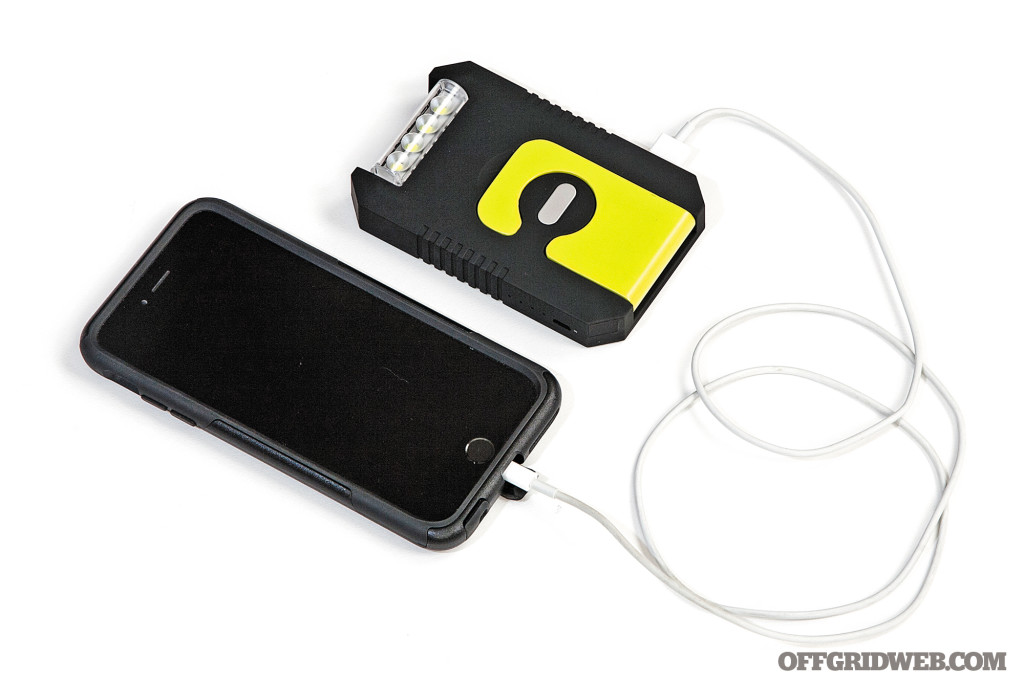
Input Port
5V 1A micro USB
Actual Simultaneous USB Output
1A (as advertised)
Included Accessories
USB-to-micro-USB cable, 30-pin Apple charging port adapter
Special Features
Integrated solar panel, swiveling 4-LED flood light, folding stand/hook, 4-LED charge indicator
MSRP
$50
URL
www.securproducts.com
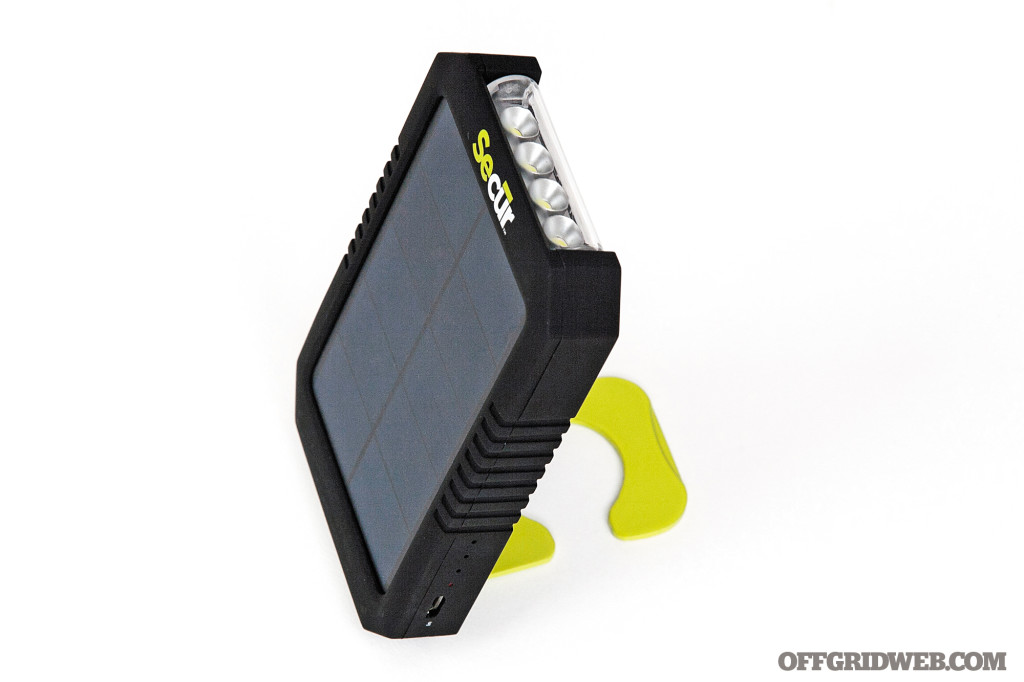
The Secur SP-3009 is a 3,000-mAh battery pack with a single 1A USB output port. On paper, that sounds pretty average — until you see the other features. First, this device has a high-efficiency 5.5V 0.28A solar panel, which can yield a full recharge in about 12 hours of direct sunlight. Then there’s the 4-LED flood light, which swivels 90 degrees. Finally, a metal hook folds out of the back side, and can be used as a stand or to hang the device upside-down. Unfortunately, the instruction manual is full of broken English — such as “lights will turn off with the electric quantity decreasing when discharing [sic].” Also, on its own, the internal battery isn’t anything to write home about. The real value to the SP-3009 is in its solar panel, light, and stand.
Pros:
- Built-in solar panel provides a sustainable power source
- Lightweight
Cons:
- Low capacity and slow 1A charging speed
- Included old-style Apple 30-pin connector isn’t very useful these days
ZeroHour BB Battery Backup
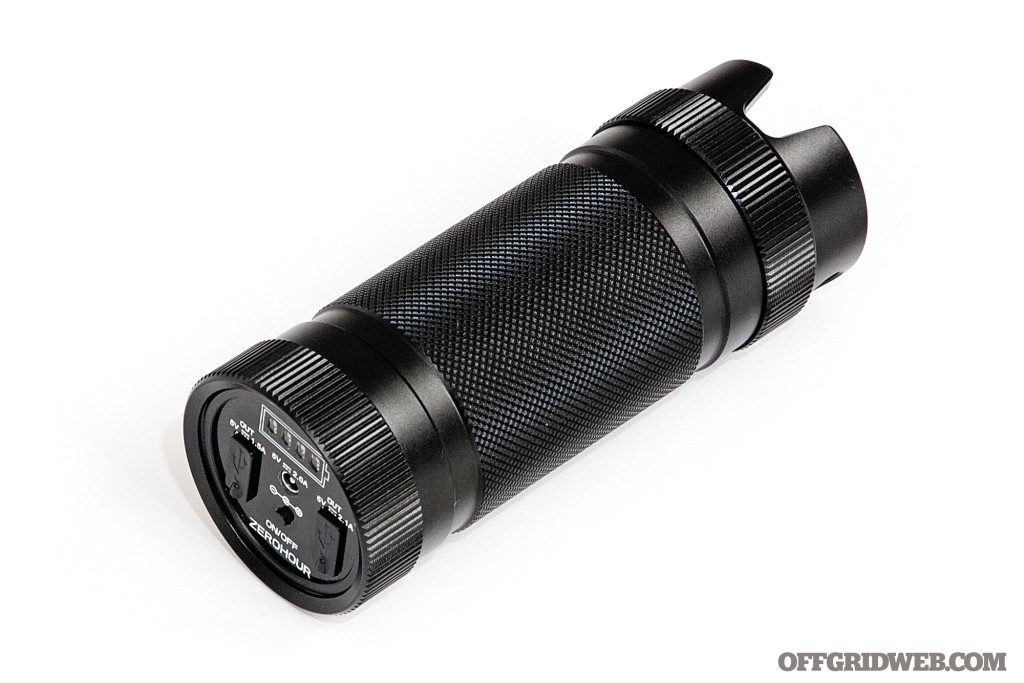
Dimensions
7.3 inches tall by 2.3 inches diameter
Weight
11.7 ounces
Battery Type
Three removable 18650 lithium-ion cells
Milliamp Hour Capacity (mAh)
10,000 mAh at 3.7V
Output Ports
5V 1.5A USB, 5V 2.1A USB
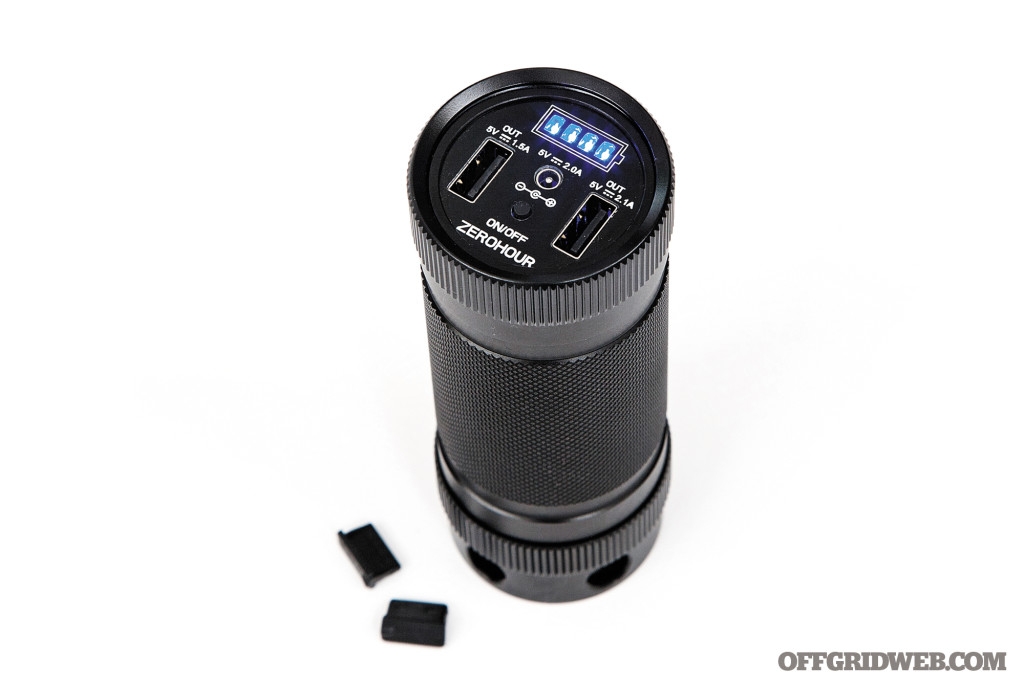
Input Port
5V 2A 4mm round port
Actual Simultaneous USB Output
2.1A and 1A (below advertised spec on 1.5A port)
Included Accessories
USB to 4mm round charging cable, 2.1A wall charger, drawstring pouch
Special Features
Waterproof (IPX8 — over 6 meters), 4-LED charge indicator, compatible with ZeroHour flashlight head and other optional accessories
MSRP
$150
URL
www.zerohourxd.com
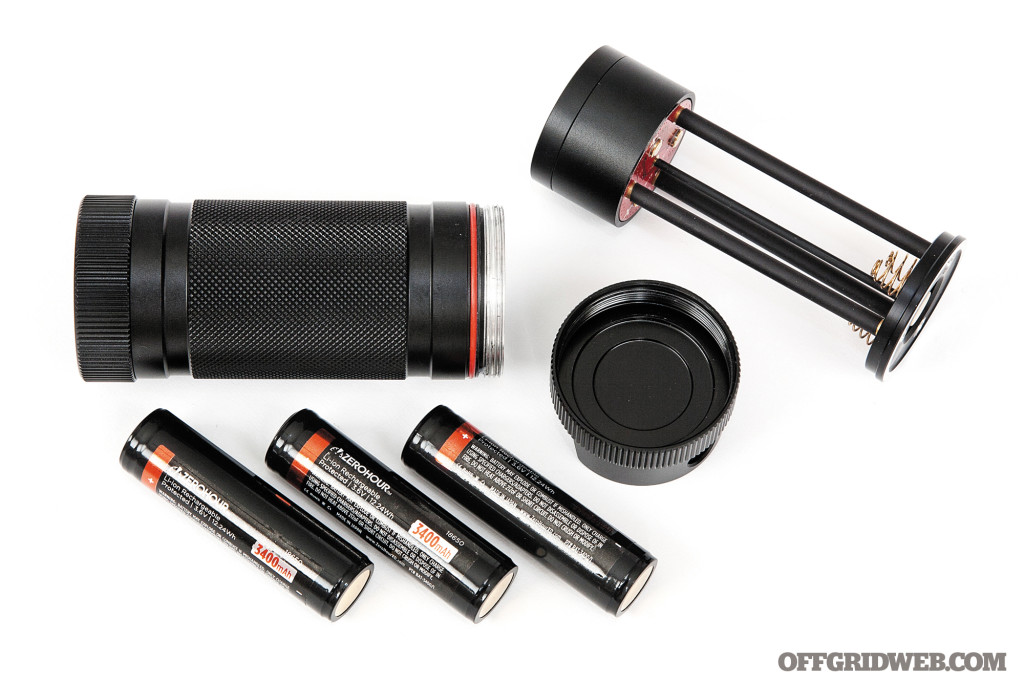
At first glance, you might mistake the cylindrical aluminum ZeroHour BB Battery Backup for a tactical flashlight — and to be honest, you wouldn’t be too far from the truth. Unscrew the waterproof endcap, and out slides a battery carrier with three 3,400-mAh 18650 lithium cells. These are the same type of batteries found in many rechargeable flashlights, so you can easily borrow one if your light runs out of juice. Better yet, you can get a flashlight head from ZeroHour for $65, and simply thread it onto the end of this BB unit to transform it into a 1,000-lumen light/power bank combo. That’s pretty ingenious, but even without the flashlight head, this ultra-tough charger would be our choice for harsh environments.
Pros:
- Standardized removable batteries provide added reliability and versatility
- Transforms into an LED flashlight by replacing the end cap with a ZeroHour flashlight head (sold separately)
Cons:
- Cylindrical design tends to roll away on smooth surfaces, unless you purchase an optional anti-roll cap for $15
- Rubber USB port plugs are very easy to misplace
More From Issue 16
Don’t miss essential survival insights—sign up for Recoil Offgrid’s free newsletter today.
Read articles from the next issue of Recoil Offgrid: Issue 17
Read articles from the previous issue of Recoil Offgrid: Issue 15
Check out our other publications on the web: Recoil | Gun Digest | Blade | RecoilTV | RECOILtv (YouTube)
Editor’s Note: This article has been modified from its original print version for the web.

